
The Performance Racing Industry Show is where the automotive racing world’s top manufacturers show off new trends, new technologies, and the new platforms they plan to support over the coming years. If you’re into racing, then the Indiana Convention Center in December is the place to be, even if many of the show’s attendees would rather the show be in its former location in Orlando.
PRI has been a staple of my event season for as long as I can remember, as it helps me to set up ideas for articles in the new year while upping my exposure to products I may have missed in the current year. Since covering the happenings in the racing world is how I earn my bread, PRI provides me with the opportunity to find the butter. Bad dad jokes aside, PRI is also vastly different in scope than the Specialty Equipment Market Association (SEMA) show, which takes place a few weeks prior, in Las Vegas. You’ll find the down-and-dirty, big-power pieces here at PRI.
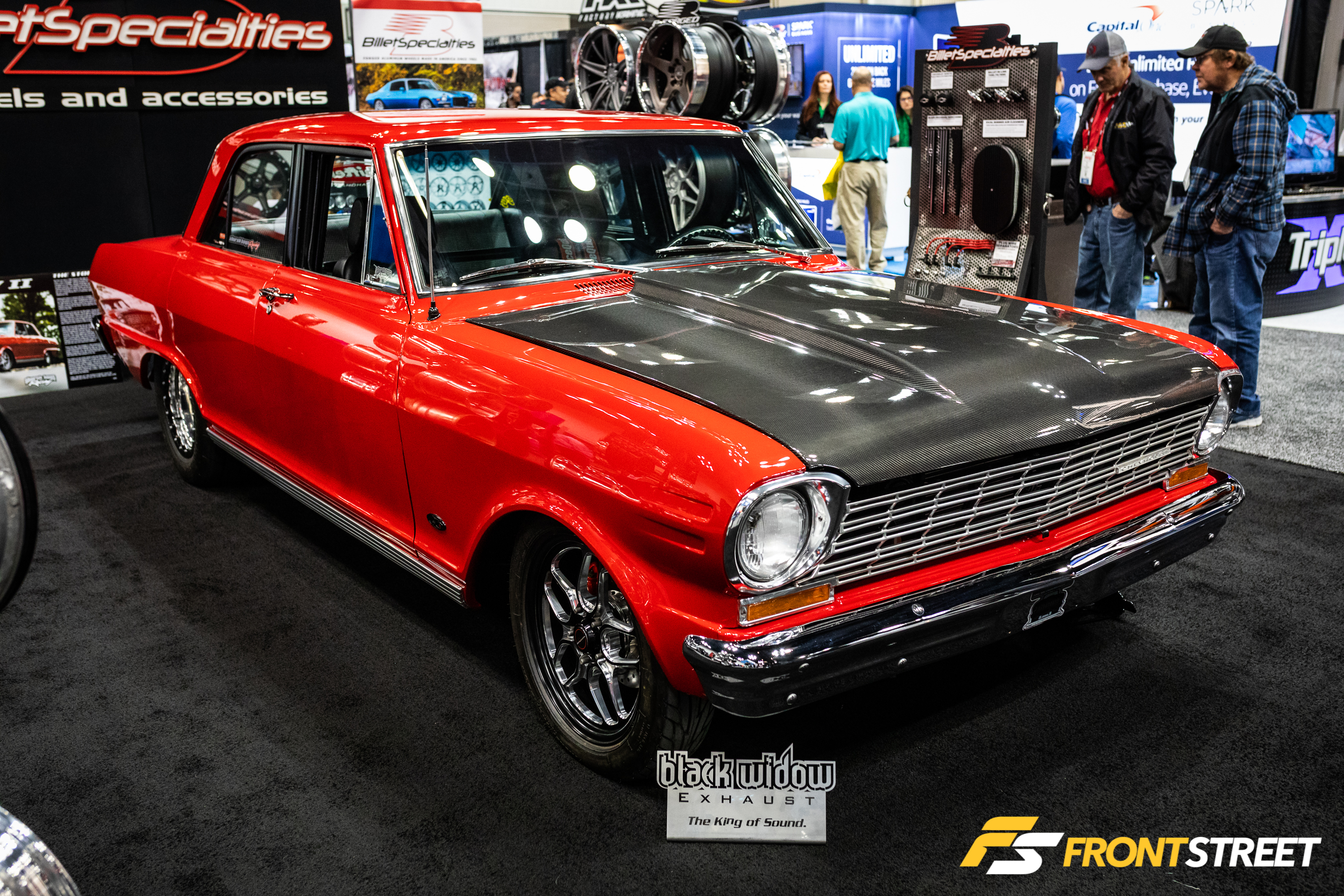
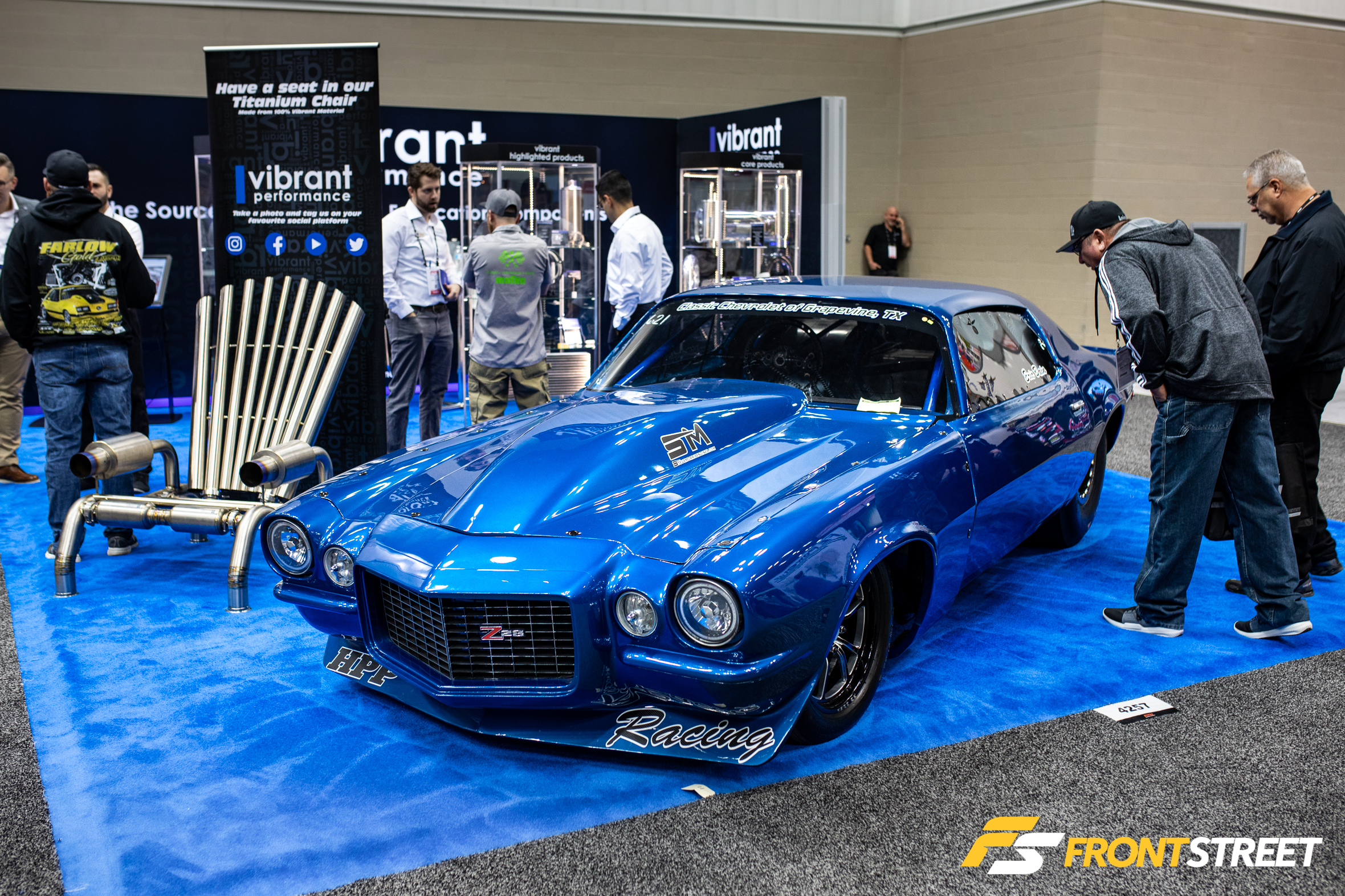
When I covered PRI in 2018, one constant theme I discovered was the prevalence of billet products throughout the show, from engine blocks to cylinder heads, suspension goodies, and more.
The billet goodness continued in 2019. Manufacturing products from billet materials offer engineers and product designers the ability to make running changes quickly and easily using CAD software. They are also typically less expensive to get off the ground and into the manufacturing process, as it’s far less expensive to tool up to make billet components when compared to all of the elements that are required for casting identical products.
So, billet stuff is cool, and I’ll dive into that rabbit hole a bit more, shortly. But first, I want to talk about one technology that is just entering the racing world in a big way. A conversation with AEM Electronics’ Lawson Mollica led me down the path of power management options for hot-rodding electric vehicles. AEM is one of our partners here at Front Street, and for a good reason: we align with companies who are breaking manufacturing barriers and bringing new technologies to market.
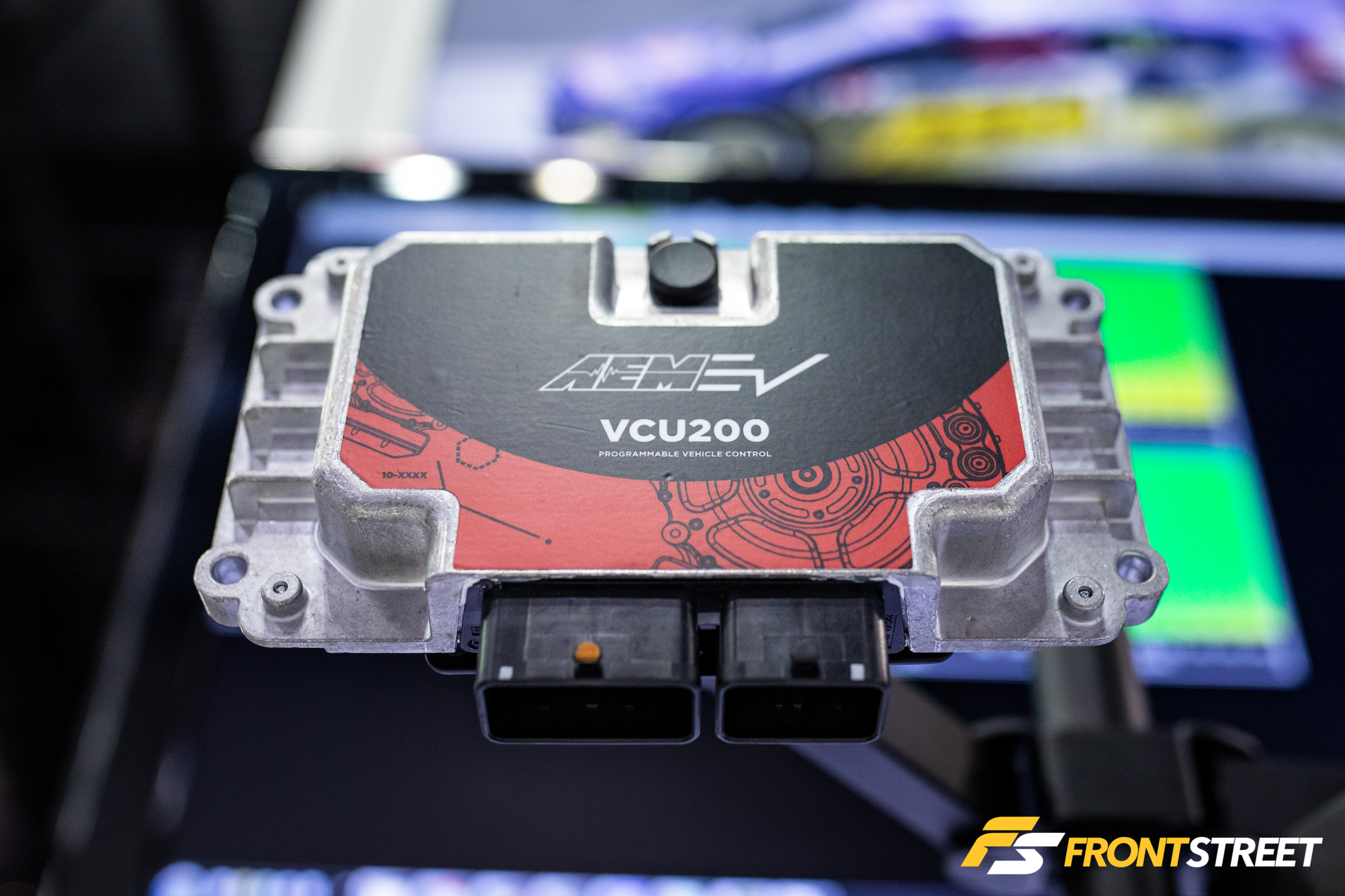
Lawson talked up the company’s soon-to-be-released (think March 2020-ish) VCU200, VCU300, and PDU-8, which are components necessary to further the performance of the electric race vehicle. Just like hot-rodding an internal combustion engine requires many parts and pieces to improve performance, modifying electric vehicles for more performance likewise requires solutions to hop up the motor’s power delivery and manage the battery’s capacity properly.
While you might think that the internal combustion engine will reign supreme for many years to come, consider that several OE manufacturers have committed to going all-electric by the end of the next decade. Yet others have already targeted dates to cease internal combustion engine production.
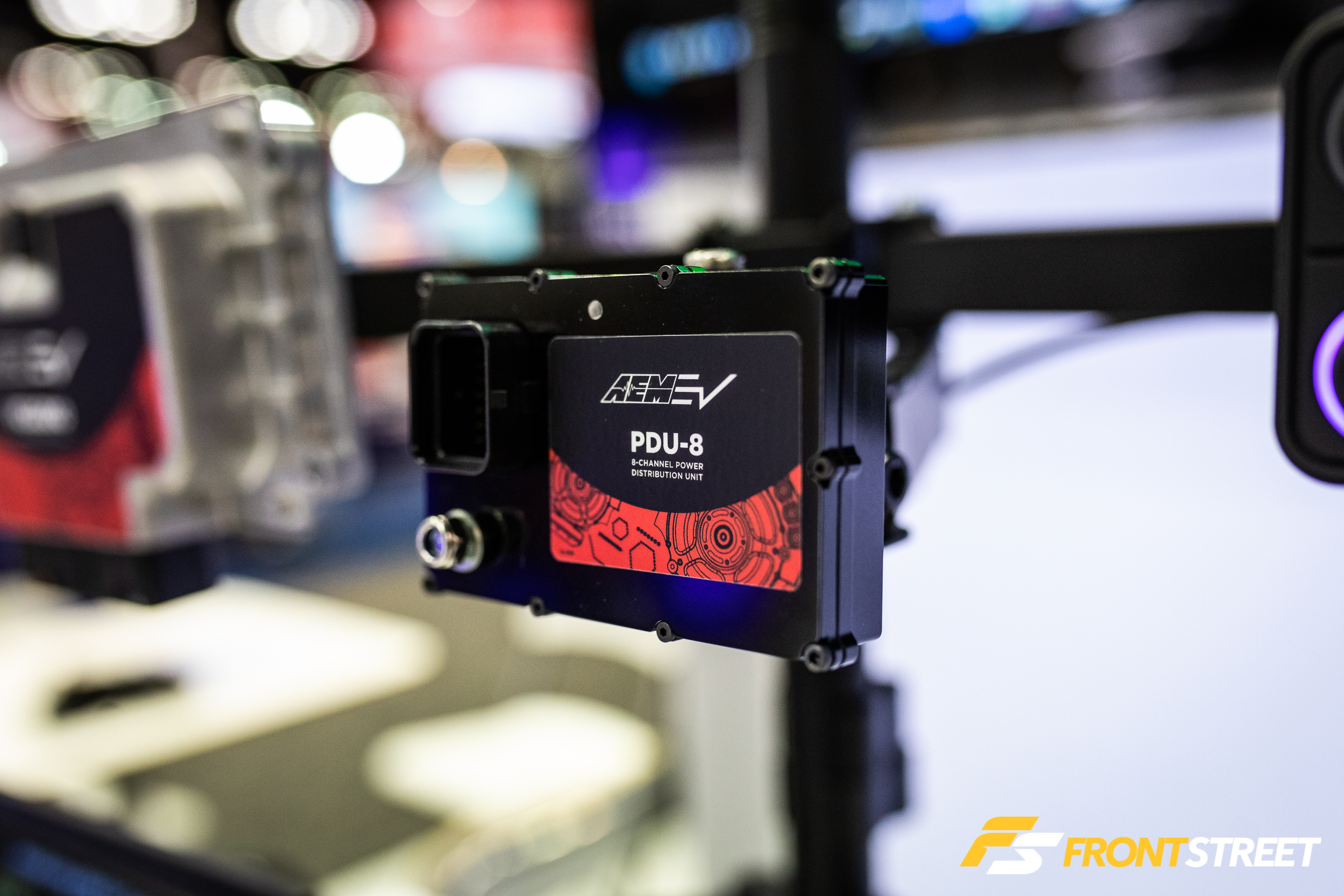
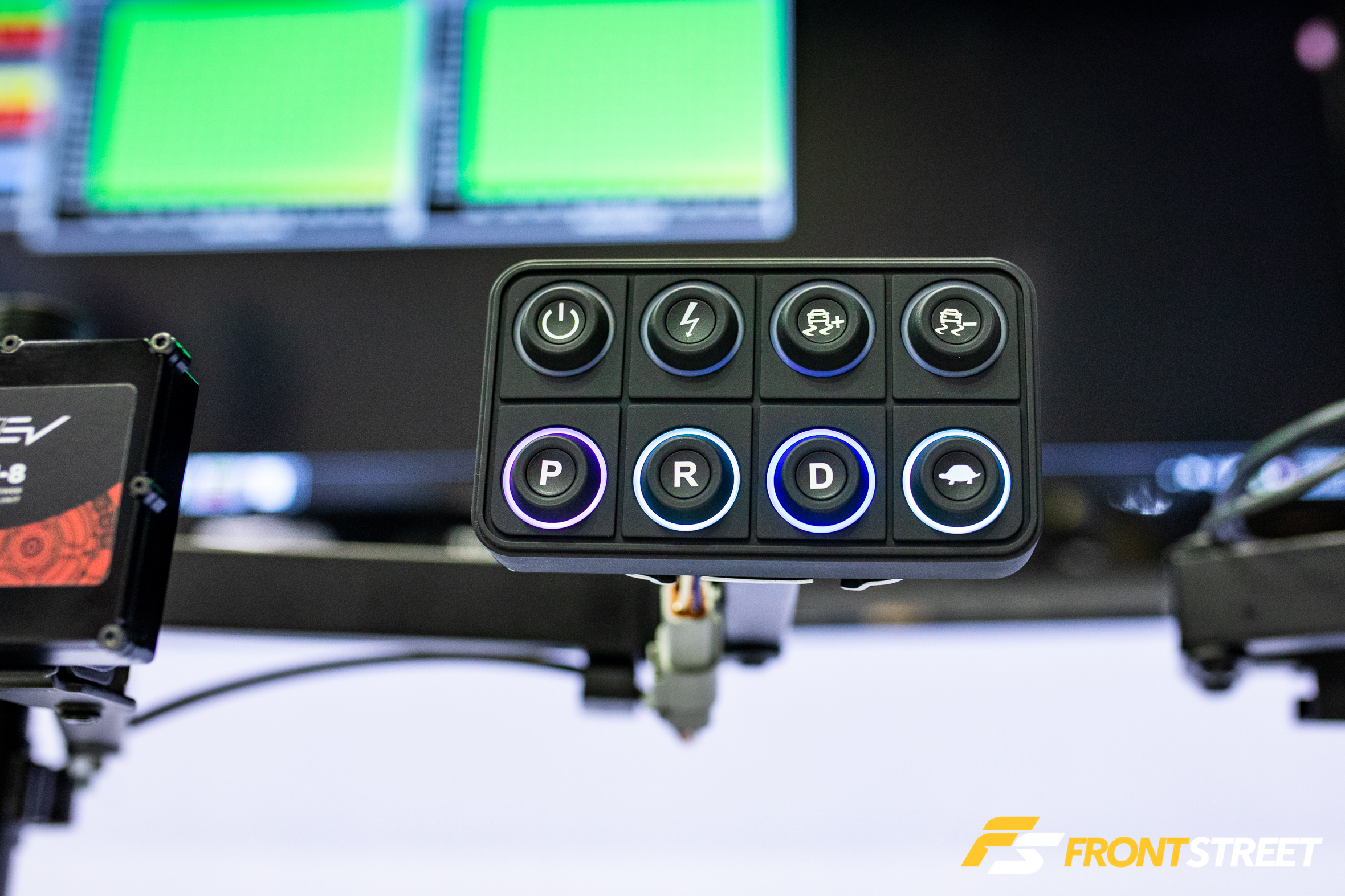
So AEM’s been targeting the EV performance world in a big way with the new components, which give the tuner—yes, these things will require someone well-versed in electric power management to be successful—control over all aspects of the vehicle’s components. The VCU will offer control over the DC-DC converter, on-board battery charger, and other necessary areas of the electric vehicle’s systems.
The hot-rodding guys will like this part—the VCUs also offer motorsport features, like programmable torque curves, traction and launch control, easy map switching, pit speed limiters, variable regeneration strategies, and dynamic (in-motion) launch control.
The PDU is an electronic power distribution unit with four 20-amp and four 10-amp outputs, designed to simplify the wiring process throughout the electric race vehicle. You can daisy-chain eight of these together to control 64 channels of power. There’s also a CAN-based eight-button controller, which uses slick, easy-to-operate buttons.
Although there won’t be any camshafts to change, it’s clear that these components will be a critical part of the picture in the years to come, and AEM is ready on the ground floor.
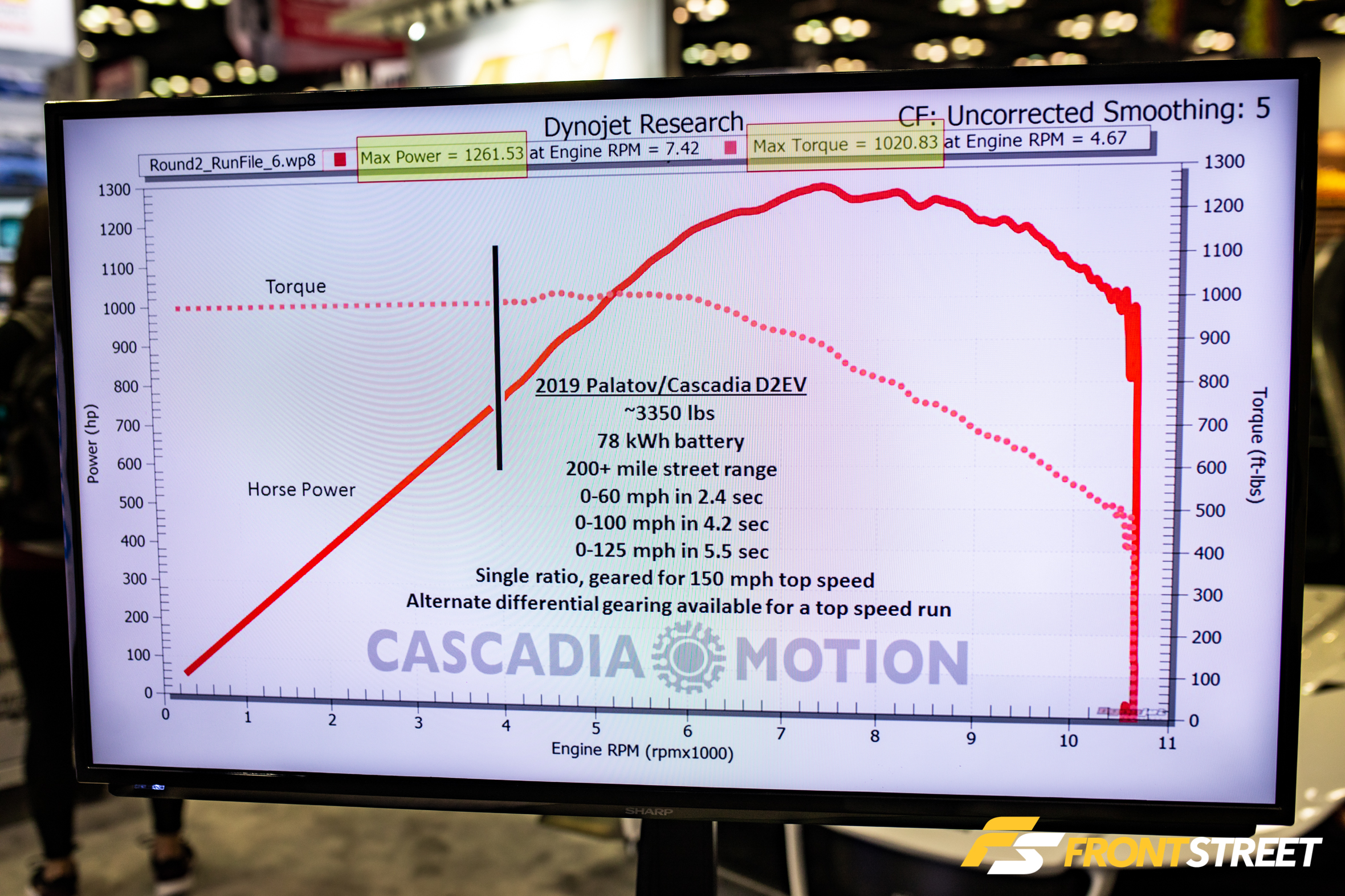
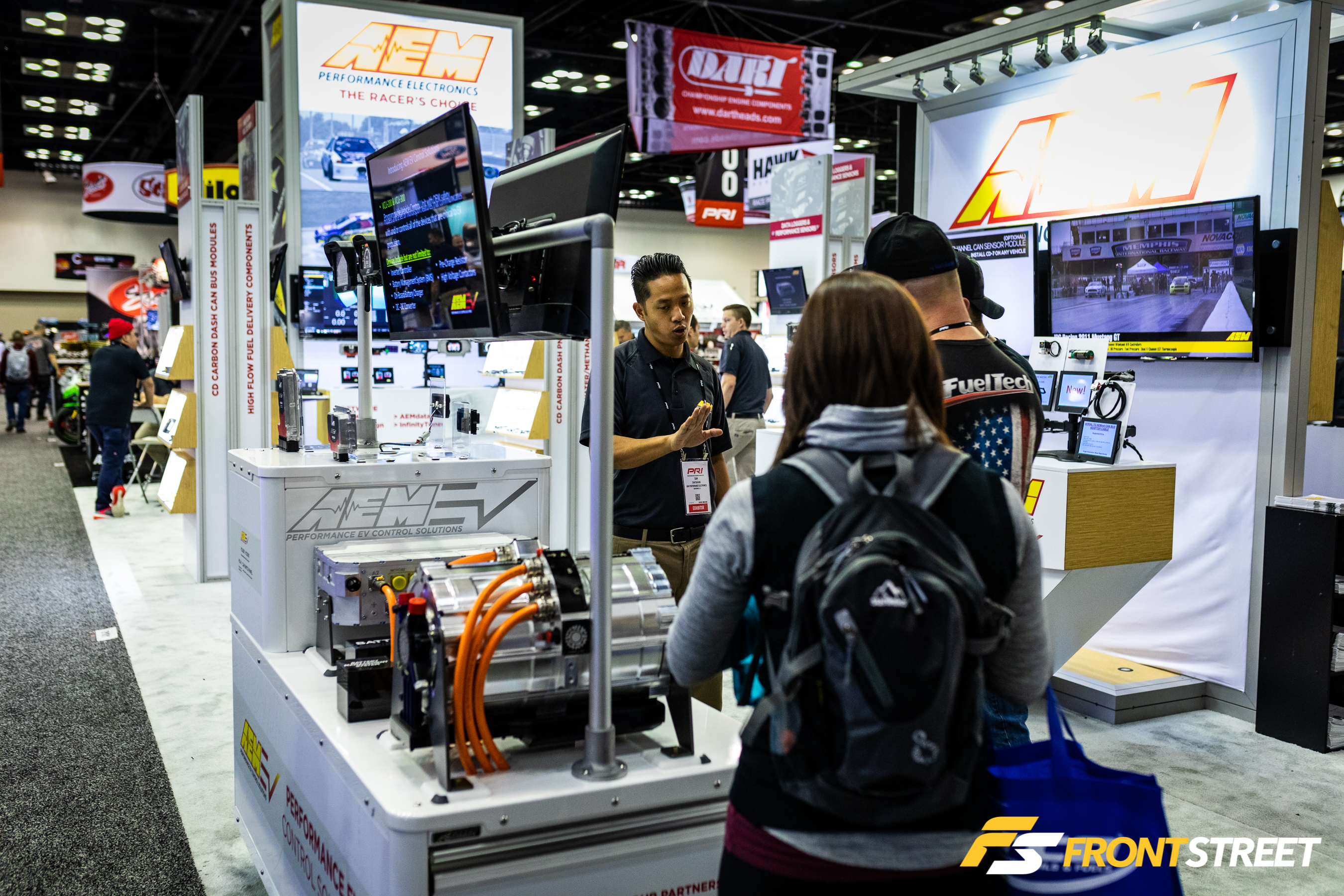
As part of the focus on EV performance, they had a 2019 Palatov/Cascadia D2EV power management unit on display. Digest that dyno graph and those performance figures, and then tell me that EVs will never catch on. No matter what type of vehicle it is, hot rodders will hot-rod.

A conversation with Evan Perkins of JE Pistons led to the discovery of the company’s all-new SRP Pro 2618 piston line. In years past, SRP pistons were constructed from 4032 aluminum alloy, and they did a solid job in thousands of street engines over the years. But the blurry lines between street cars and race cars over the last couple of years led to a growing desire for a better component from some of the company’s customers and engine building partners. Thus, the SRP Pro line was born. Featuring 2618 aluminum alloy construction, premium wrist pins and locks, along with a carbon steel ring pack, the SRP Pro can you get your engine into the upper three-digit horsepower range safely. An anti-friction skirt coating is standard on the lightweight forgings, and they are manufactured right here in the United States at JE’s Mentor, Ohio facility. JE’s parent company is Wiseco, and they invited me to that facility a couple of years ago for a tour. If you’re interested in how forged pistons come to life—no matter the name on the box—then check out that article right here.
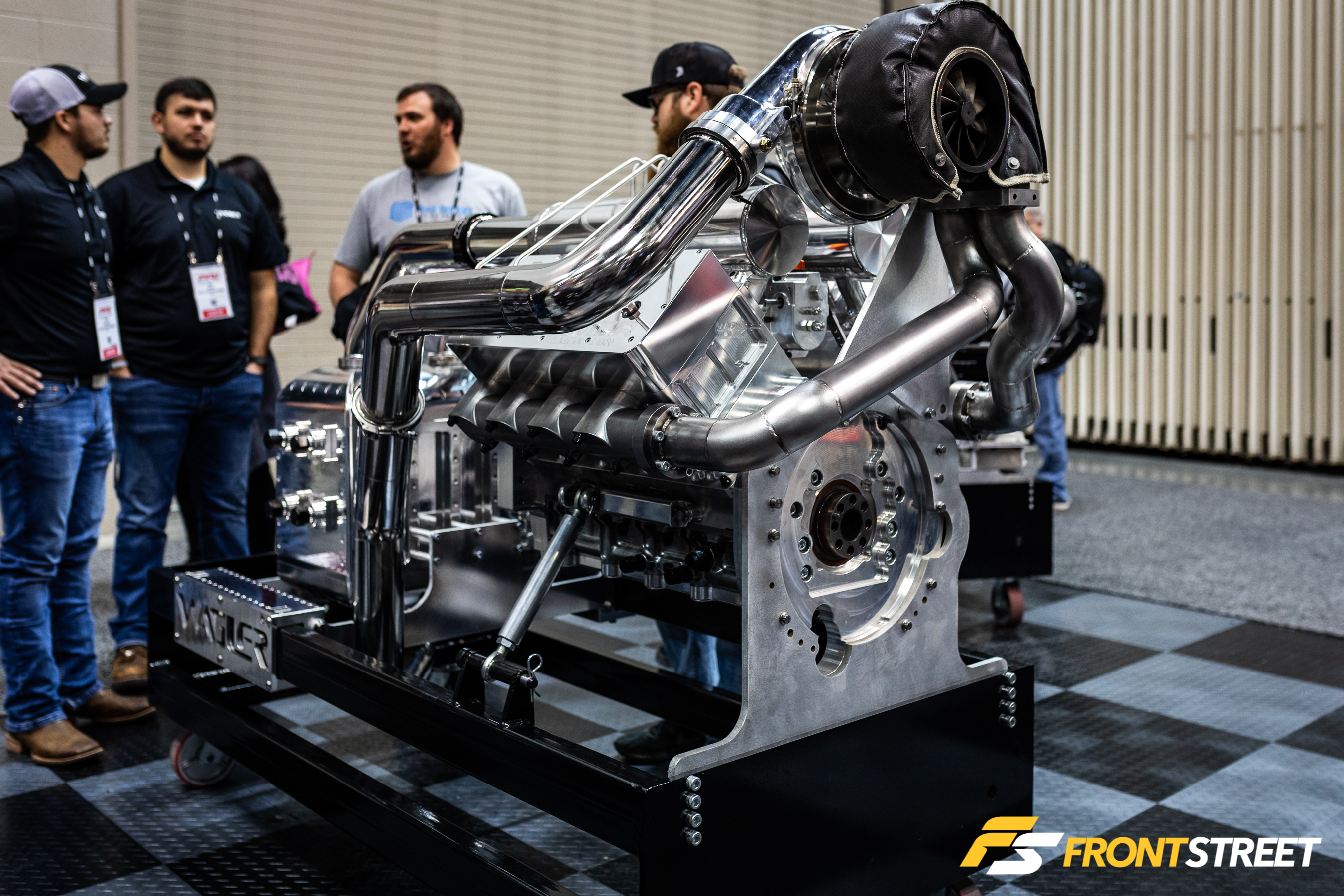

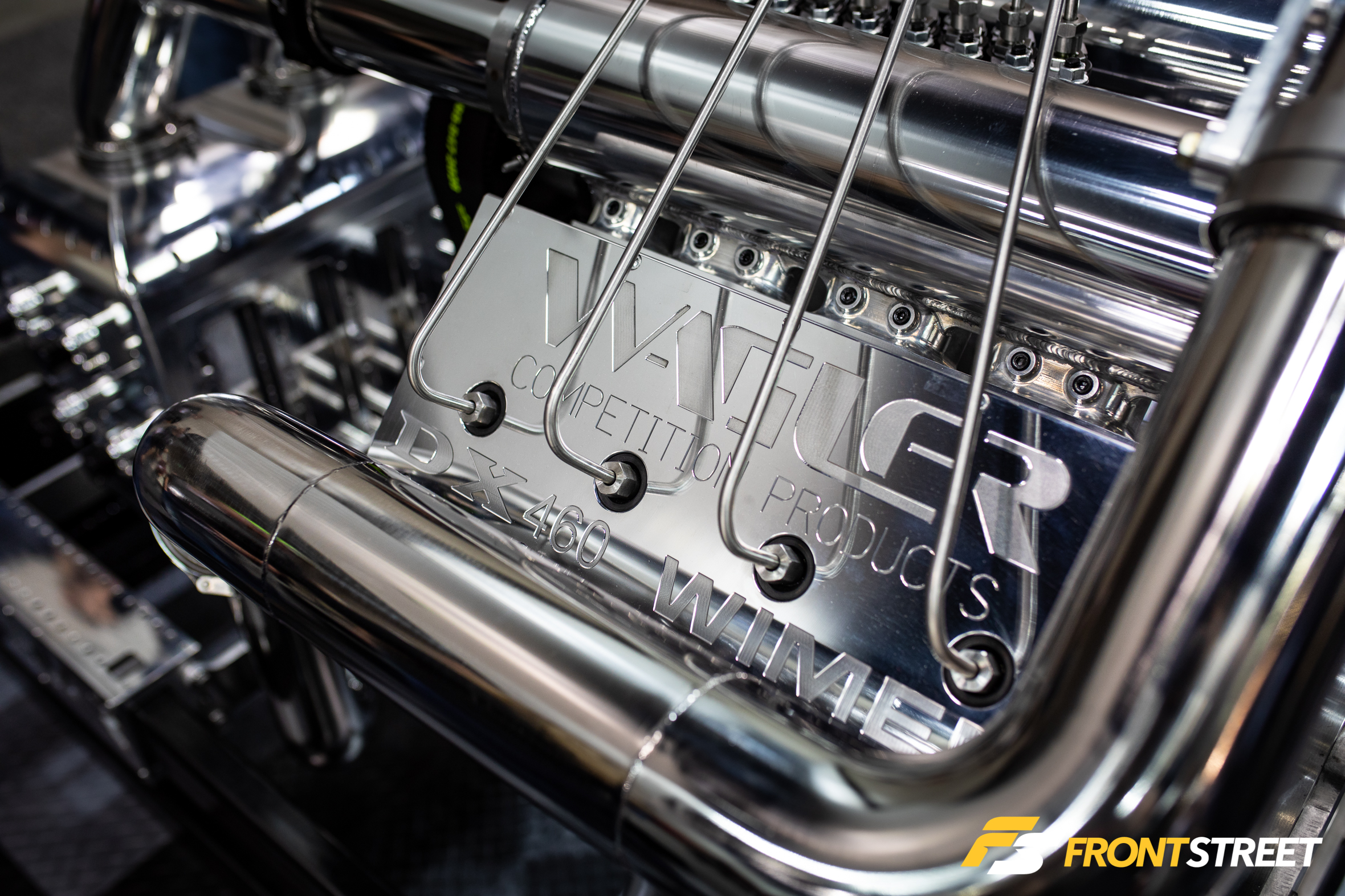

It’s no secret in the diesel world that Jeremy Wagler has his stuff together when it comes to building robust components out of his Wagler Competition Products facility in Indiana. He and his staff won the Diesel Engine Builder of the Year award back in 2017, and they’ve continued to raise the standard for high-performance Cummins builds over the last couple of years.
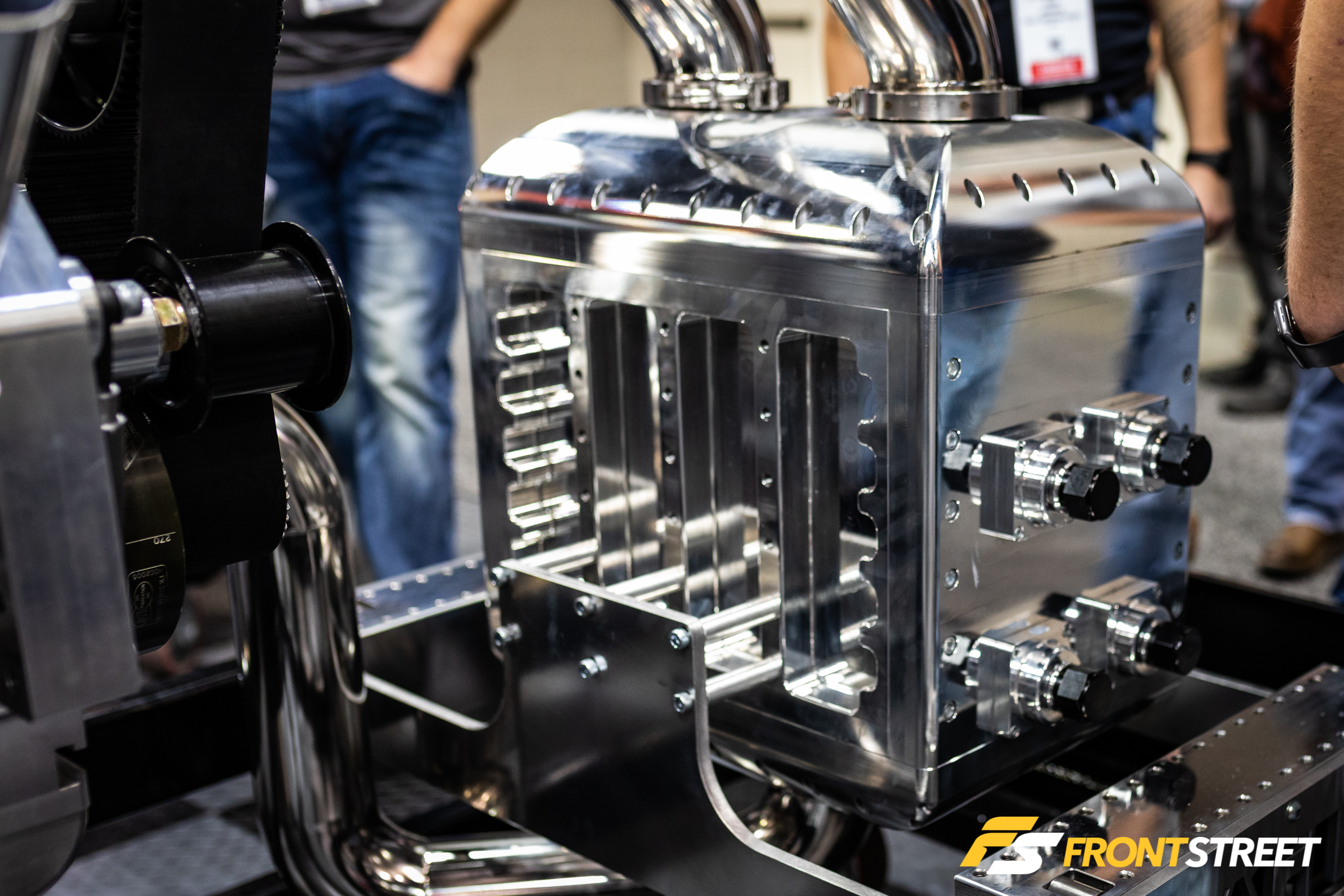
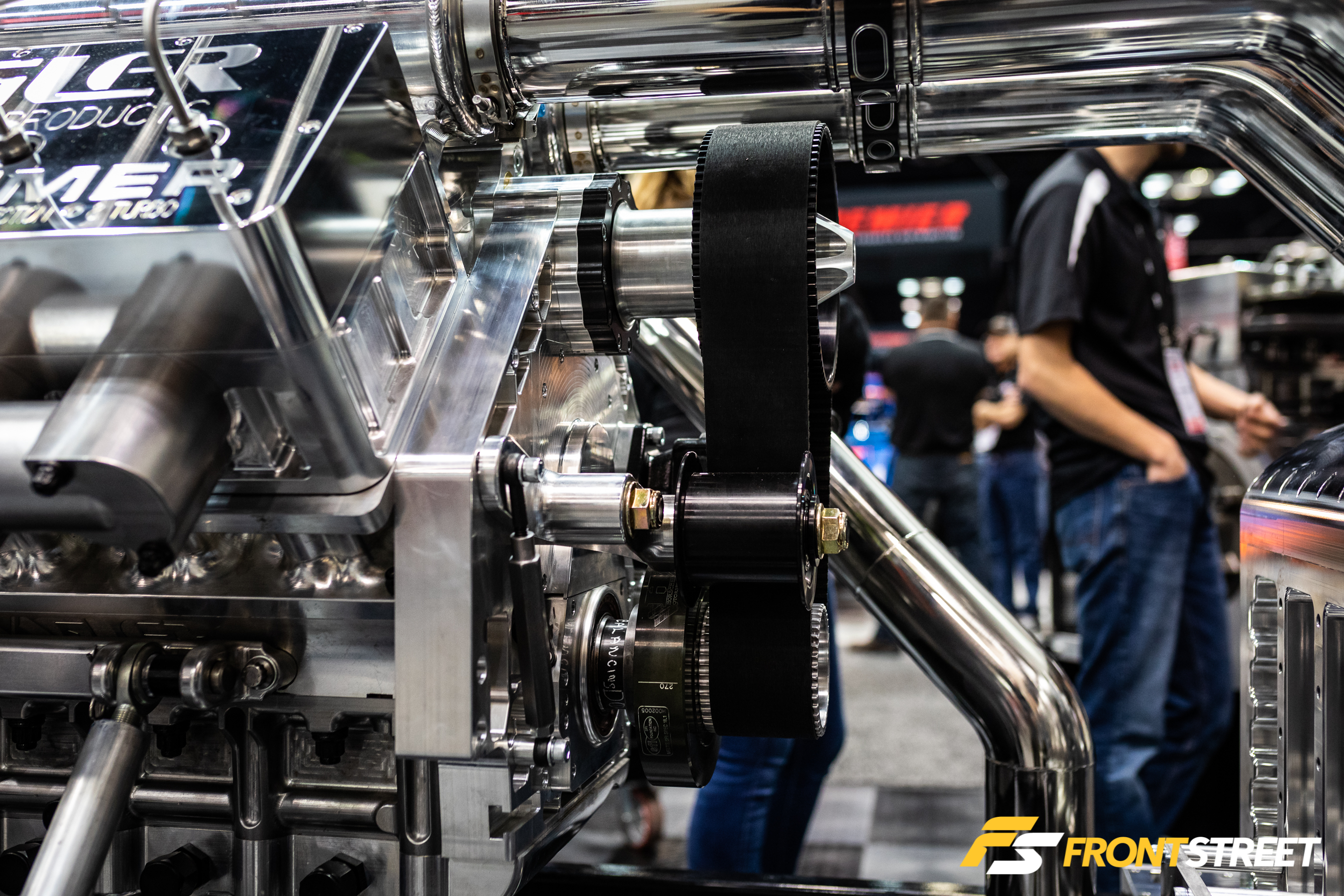
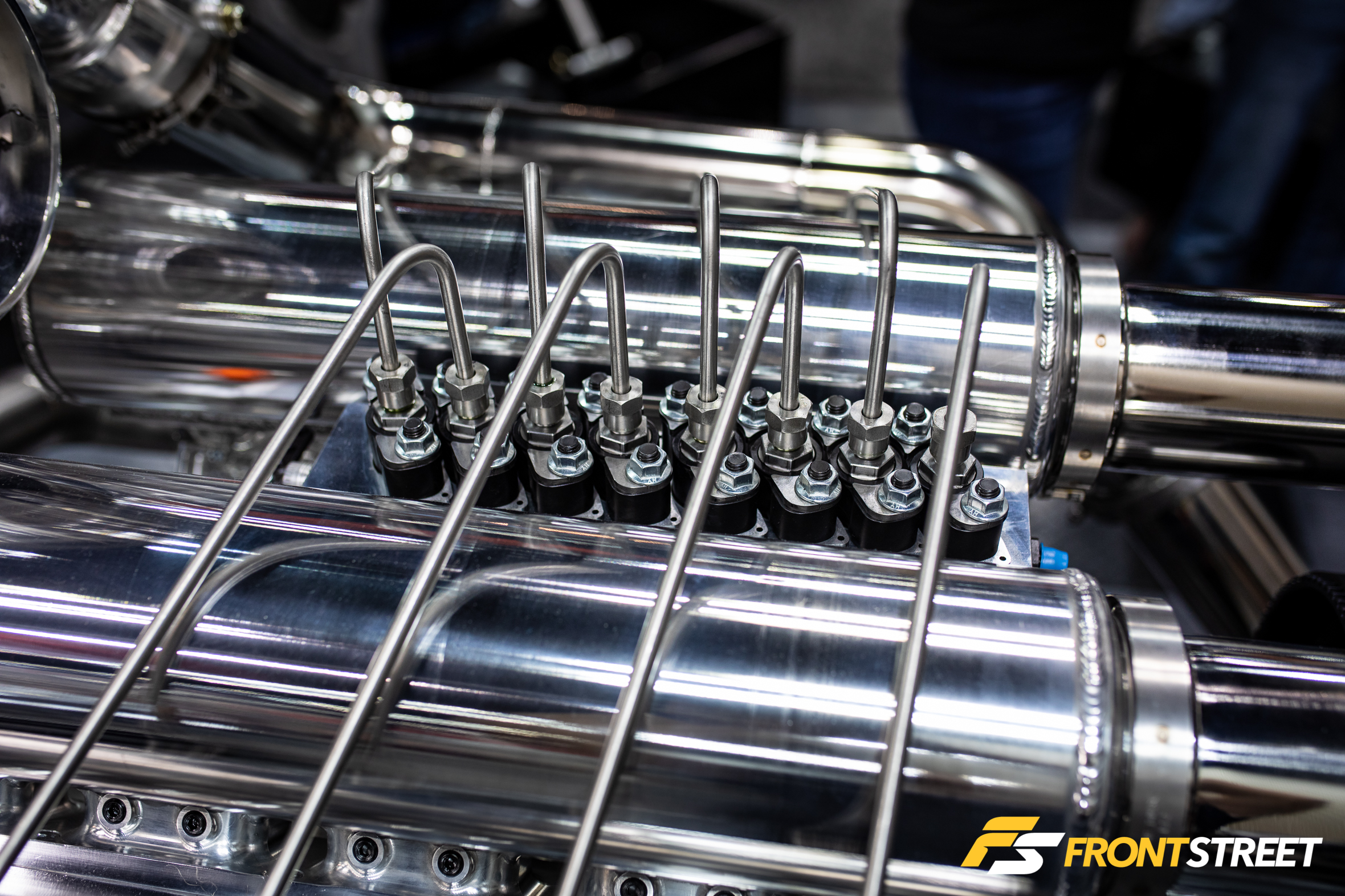
That focus culminated in the Wagler team winning yet another award at PRI this year, for its ingenuity in the form of the company’s DX460 all-billet engine. The 460 cubic-inch engine features a modular, multi-piece block design, a completely symmetrical layout, and some of the nicest CNC work I’ve ever seen anywhere, on any part. Let’s not forget the full floating intercooler and capability to suck down 180 psi of boost pressure to go with the 6,000 rpm capability. The monster Wimer Fuel Injection & Turbo mechanical injection pump combines with a Pro Stock turbocharger from Wimer, and is said to have the capability to achieve well over 3,000 horsepower.
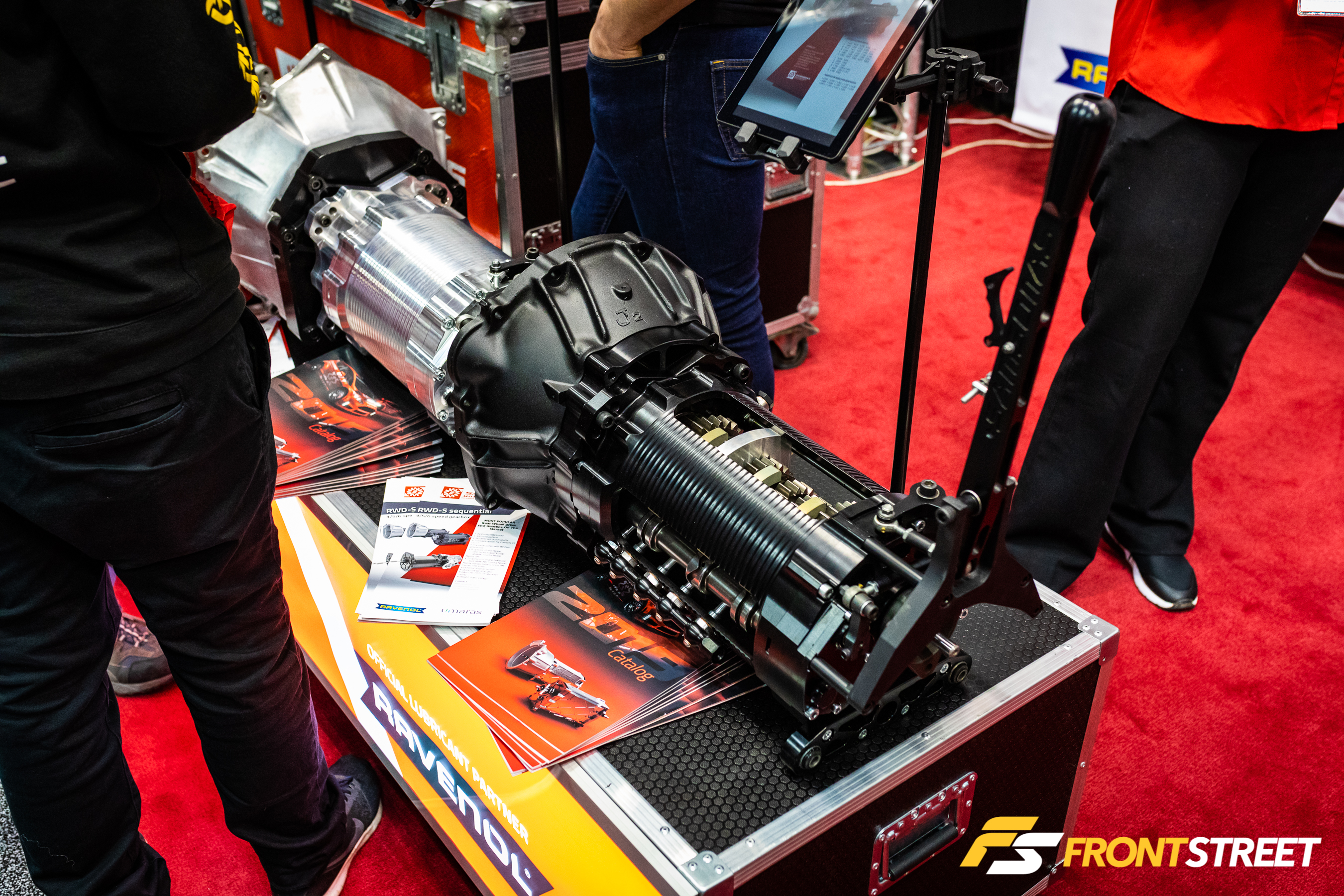
If only it were feasible for me to afford one of these Samsonas Motorsport sequential gearboxes for my Mustang, I wouldn’t be planning an automatic swap for this winter. With the option for four, five, or six speeds, straight cut teeth, and dog ring design, it offers the ultimate in mechanical feel and operational capabilities. At well north of $10,000 just for the box, it’s reserved for those racers with budgets to match. Sure is pretty, though.
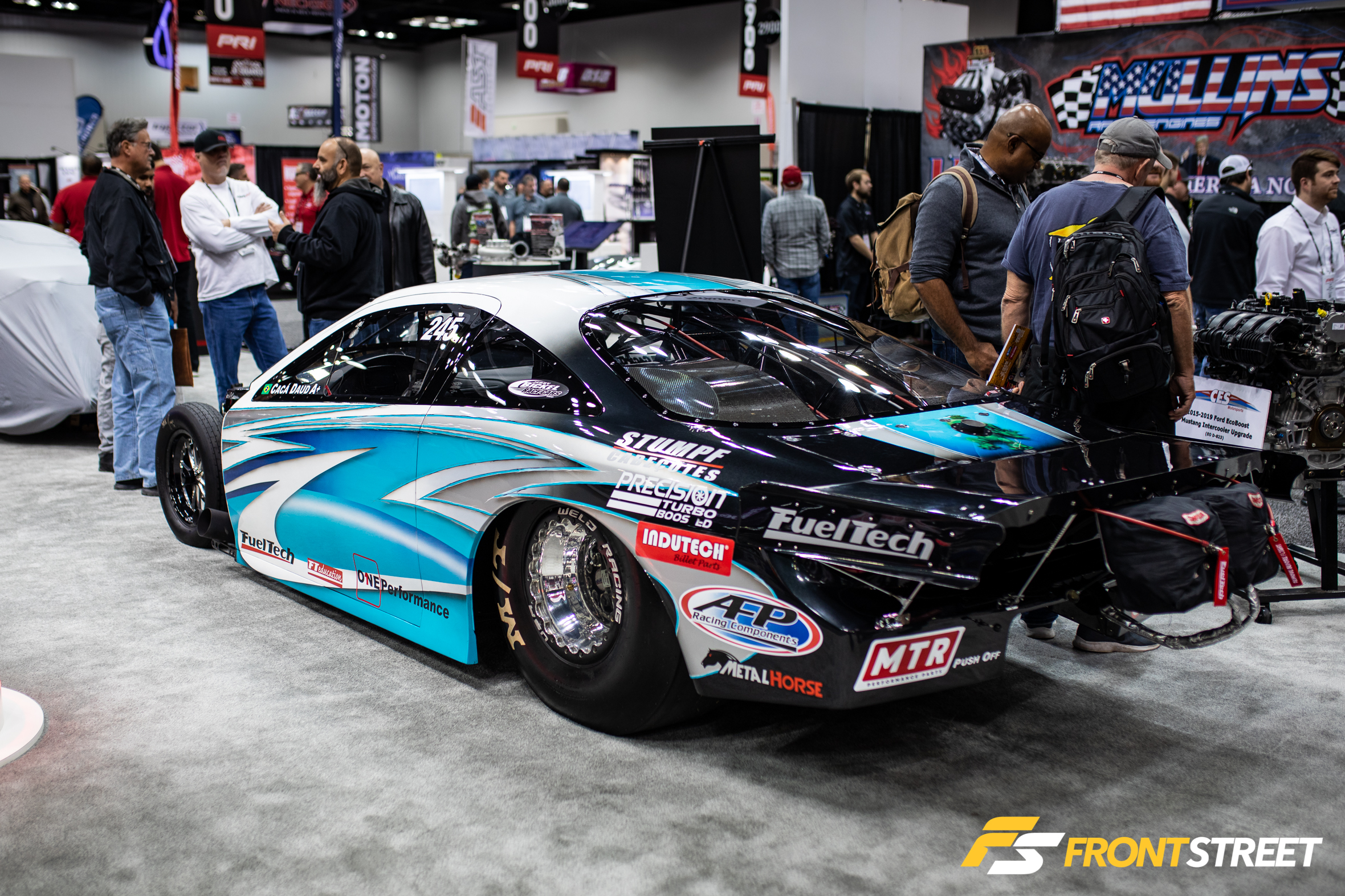
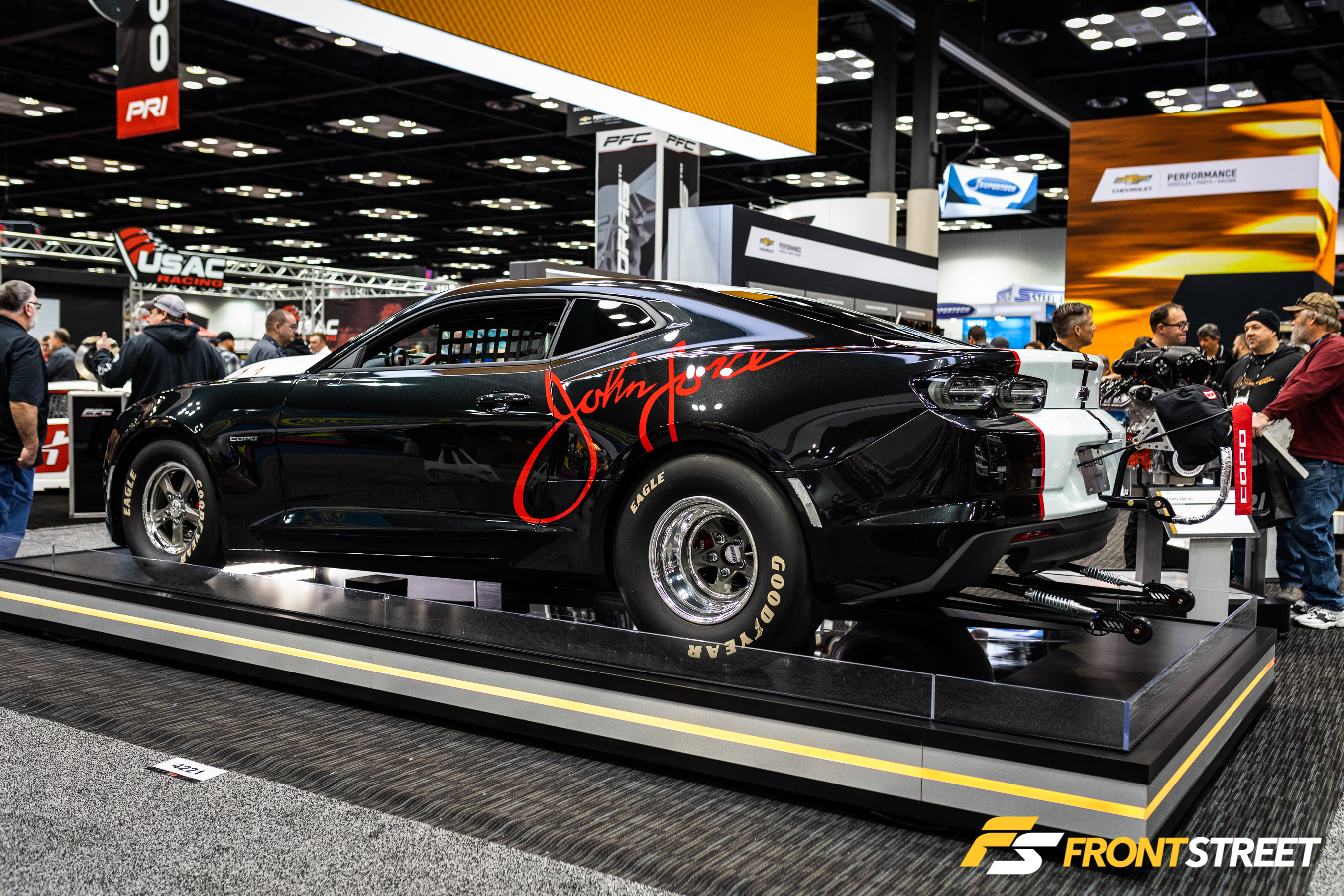
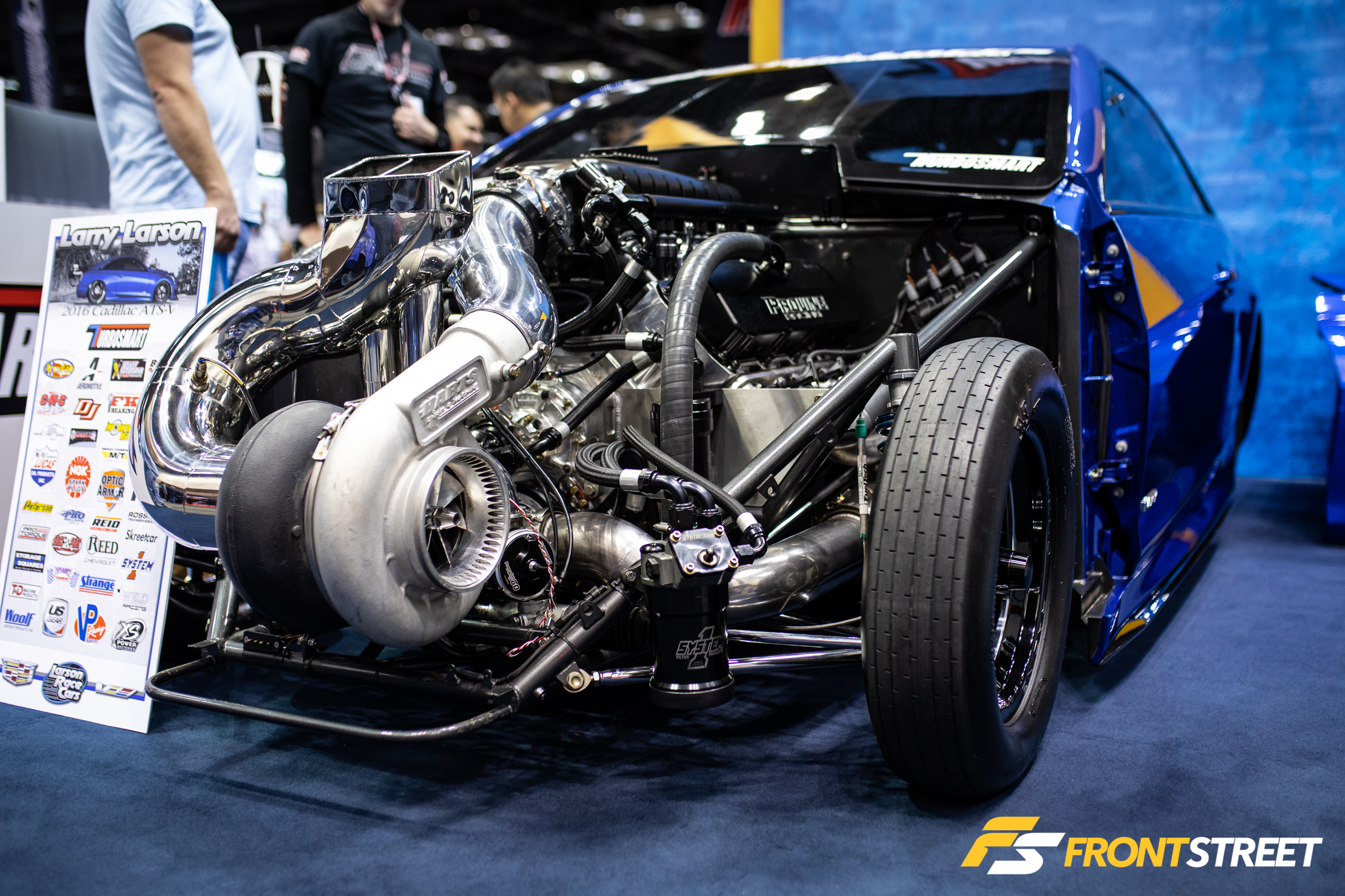
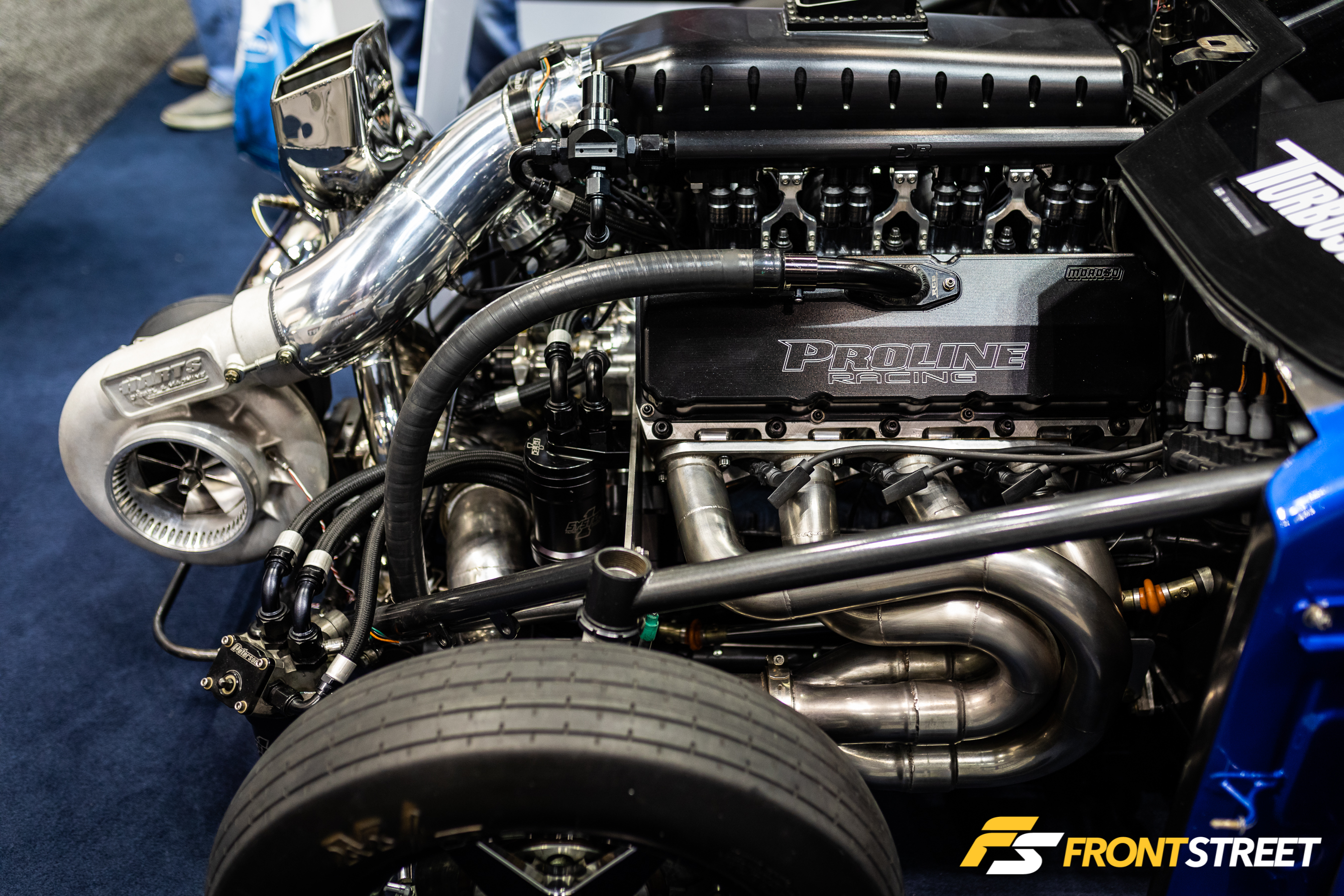
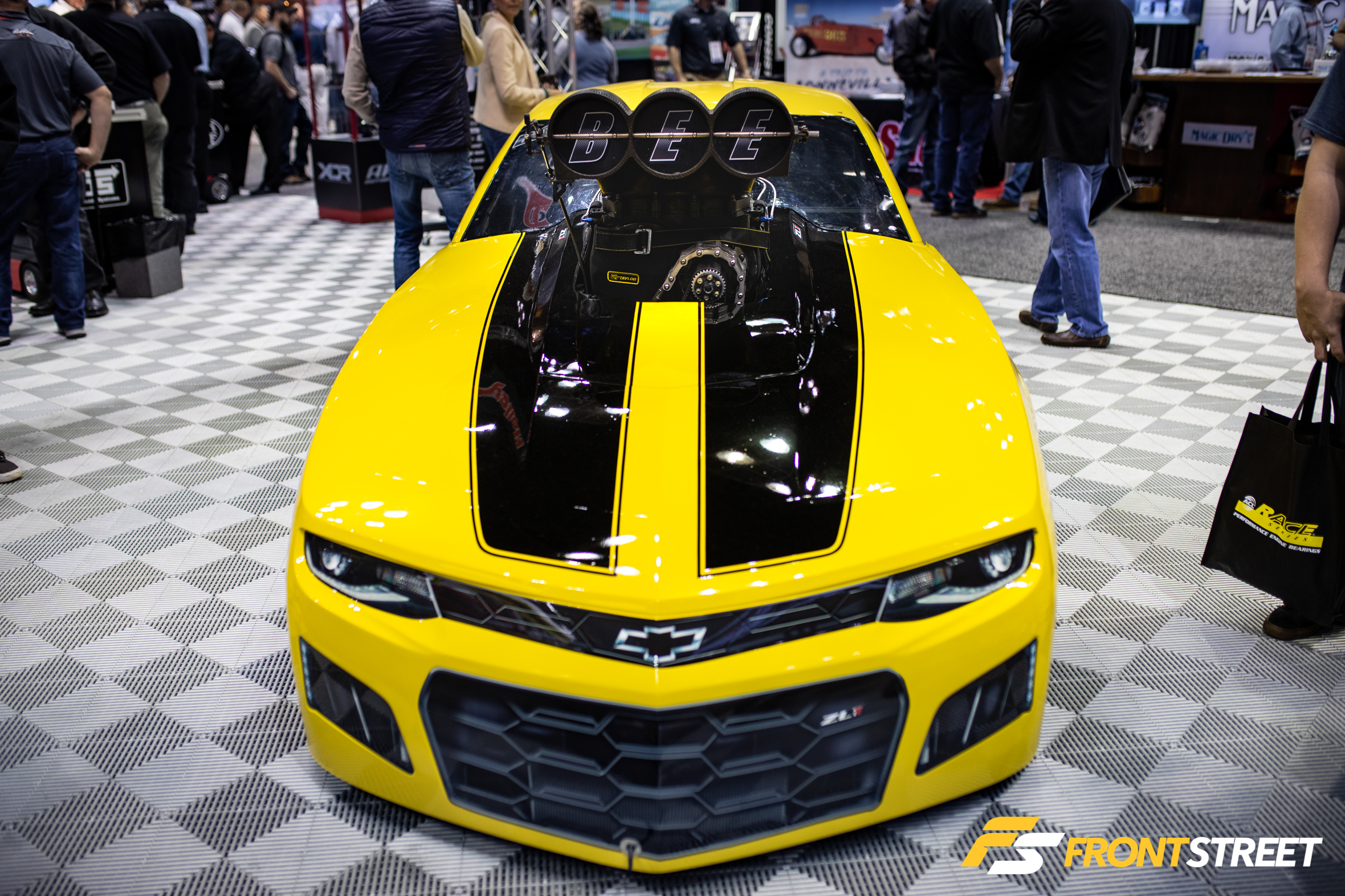
If you’re into drag racing, then PRI has something for you—no matter what your brand preference might be. From Caca Daud’s turbocharged C20XE Opel-based DOHC four-cylinder Cobalt to the John Force COPO Camaro, to Larry Larson’s turbocharged ATS-V in the Turbosmart booth, to Jeff Miller’s blown Bumblebee Camaro—and dozens more—it was easy to get your straight line fix.


The all-new iron Coyote Race engine block from Ford Performance captured the attention of big-power Ford Coyote enthusiasts everywhere. It’s designed to bridge the gap between a stock sleeved aluminum block and the billet pieces from MMR or Accufab, which will give those racers pushing the envelope with this platform a chance to compete without emptying the 401k or remortgaging the house.
There’s some room to increase the bore and stroke—with a 5.6-liter max displacement—along with billet steel six-bolt main caps and 12mm head bolt holes. It’ll be heavier than a sleeved stocker, but the strength has to come from somewhere. The beefy construction of this stout piece comes from the Class 50 iron material used in its manufacture.
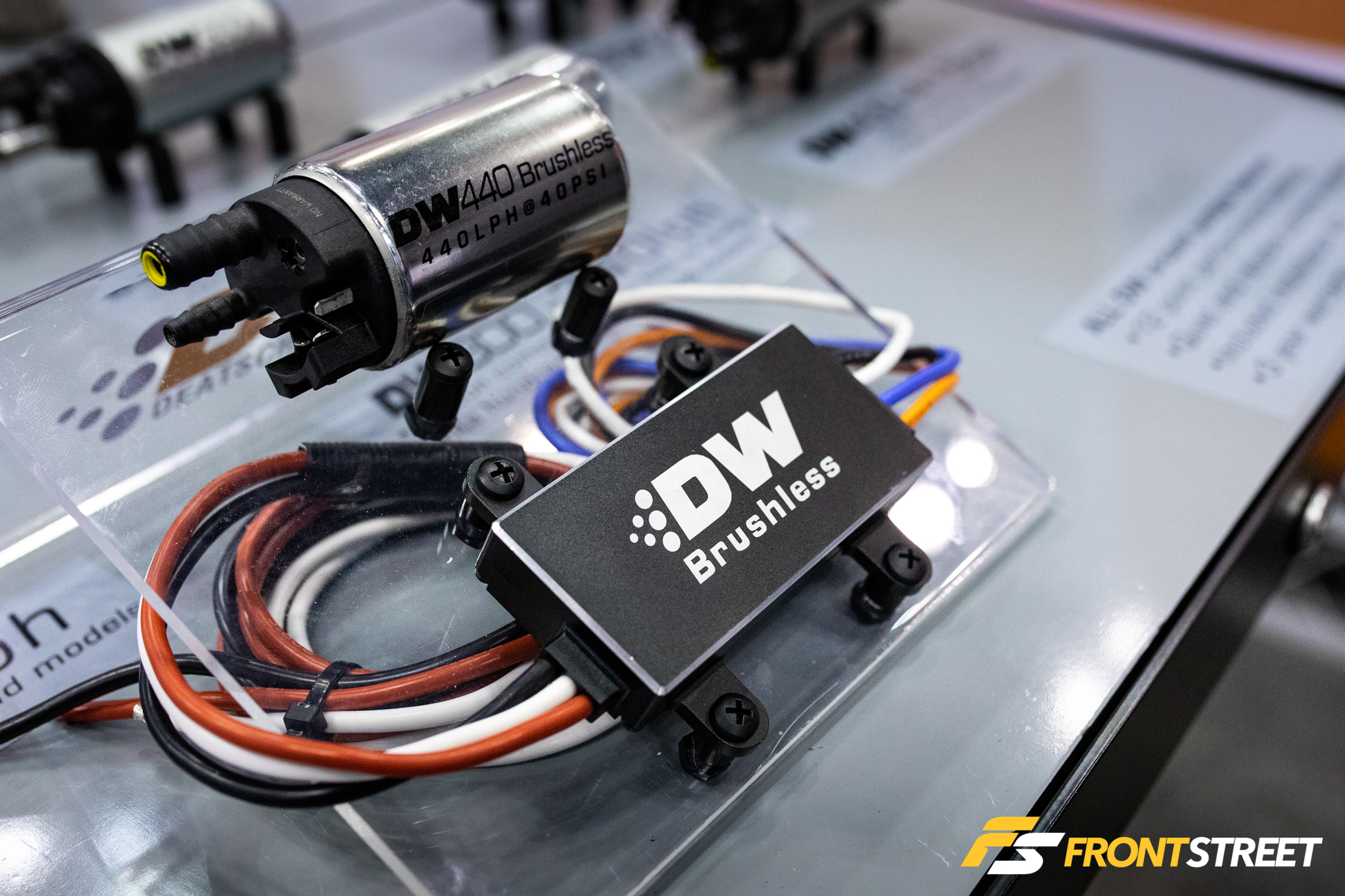
I had a nice long chat with Mike Deatsch of DeatschWerks regarding a few new products the company had on display. I almost missed the DW440 brushless in-tank pump that was sitting at the end of the display. It’s a neat little piece developed in conjunction with Bosch that’ll send 440 lph through your fuel lines at 40 psi and 13.8V of juice, with capabilities for 620 lph at 40 psi and 20V of juice energizing its motor. The brushless construction means it’s compatible with all fuels including E85 and methanol, and will be a drop-in design as the company rolls out more part numbers with the associated install kits. Keep in mind that the controller (the little black box) is separate from the pump and will need to be appropriately mounted. It’s small and thin, so that should be easy to accomplish.
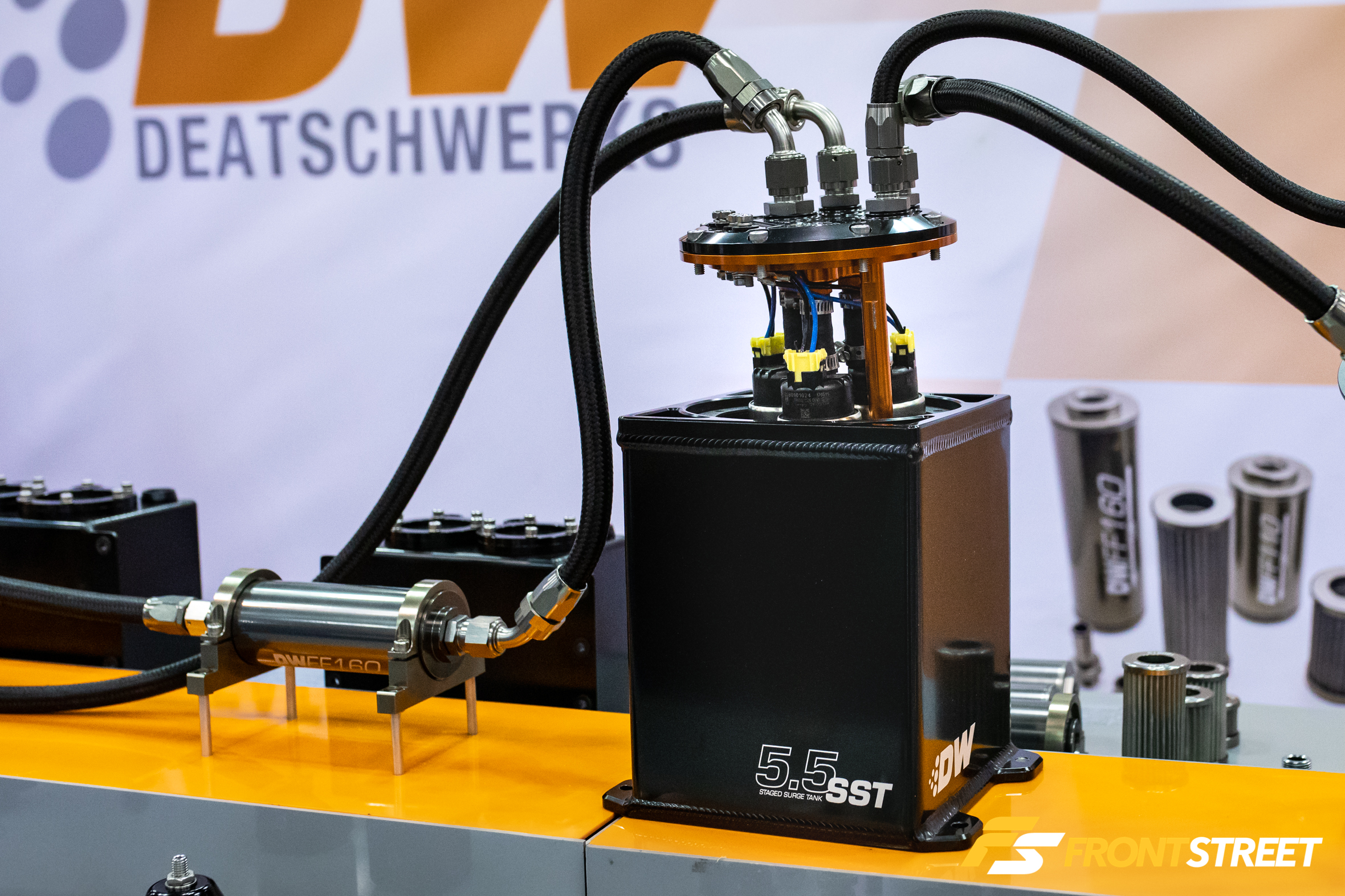
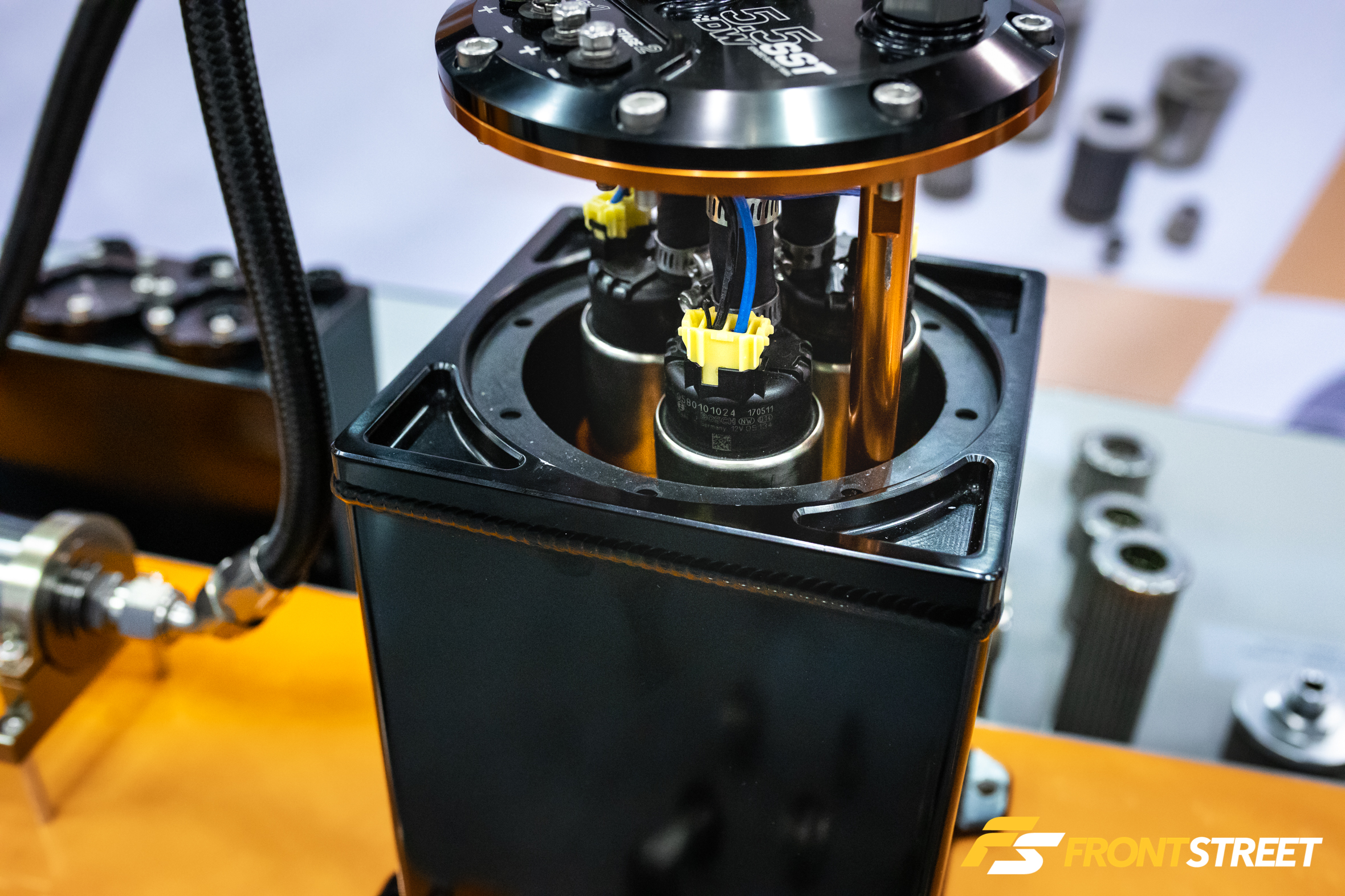

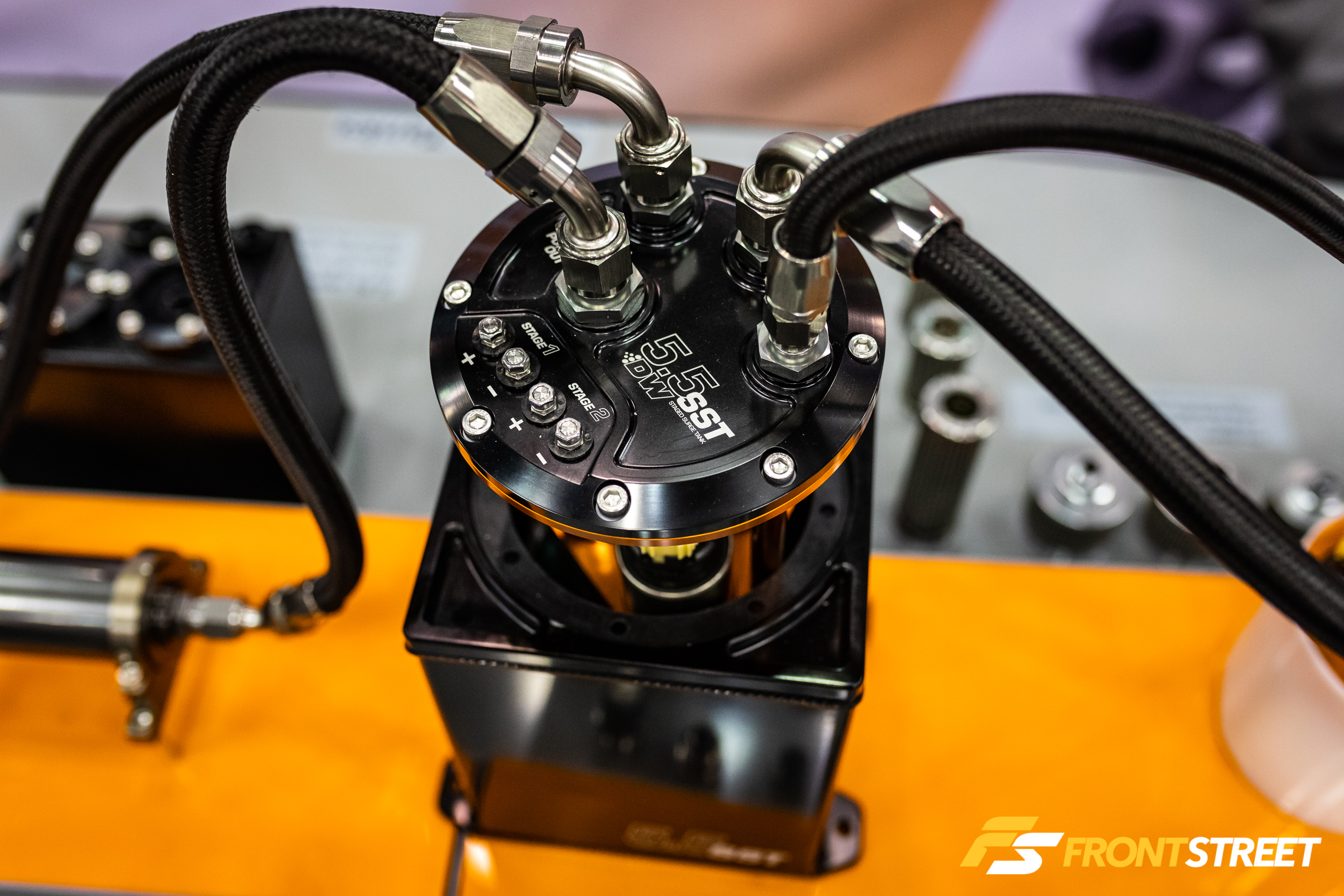
We also talked quite a bit about the company’s new 5.5 SST staged surge tank, which can work with the company’s DW200, DW300, and DW400 fuel pumps for tons of growth potential and flexibility. Deatsch says that the hat for the surge tank uses a unique manifold design to bring the flow from the three pumps together into the single -10AM ORB outlet for ease of plumbing. Since all three pumps are wired independently, the first one can be used for normal driving conditions with the second coming on-line when needed, and then the third pump can be wired in via Hobbs switch or another trigger to turn it on when required. With surge tanks becoming more popular by the day, I expect to see this thing become a serious player.
Additionally, we discussed Deatschwerks’ new drop-in dual-pump Coyote fuel hat, but Mike asked me not to show off the pictures just yet as it’s still in development. We do plan to work with DeatchWerks to show off an install of one of those in the first quarter of 2020, though, so stay tuned!
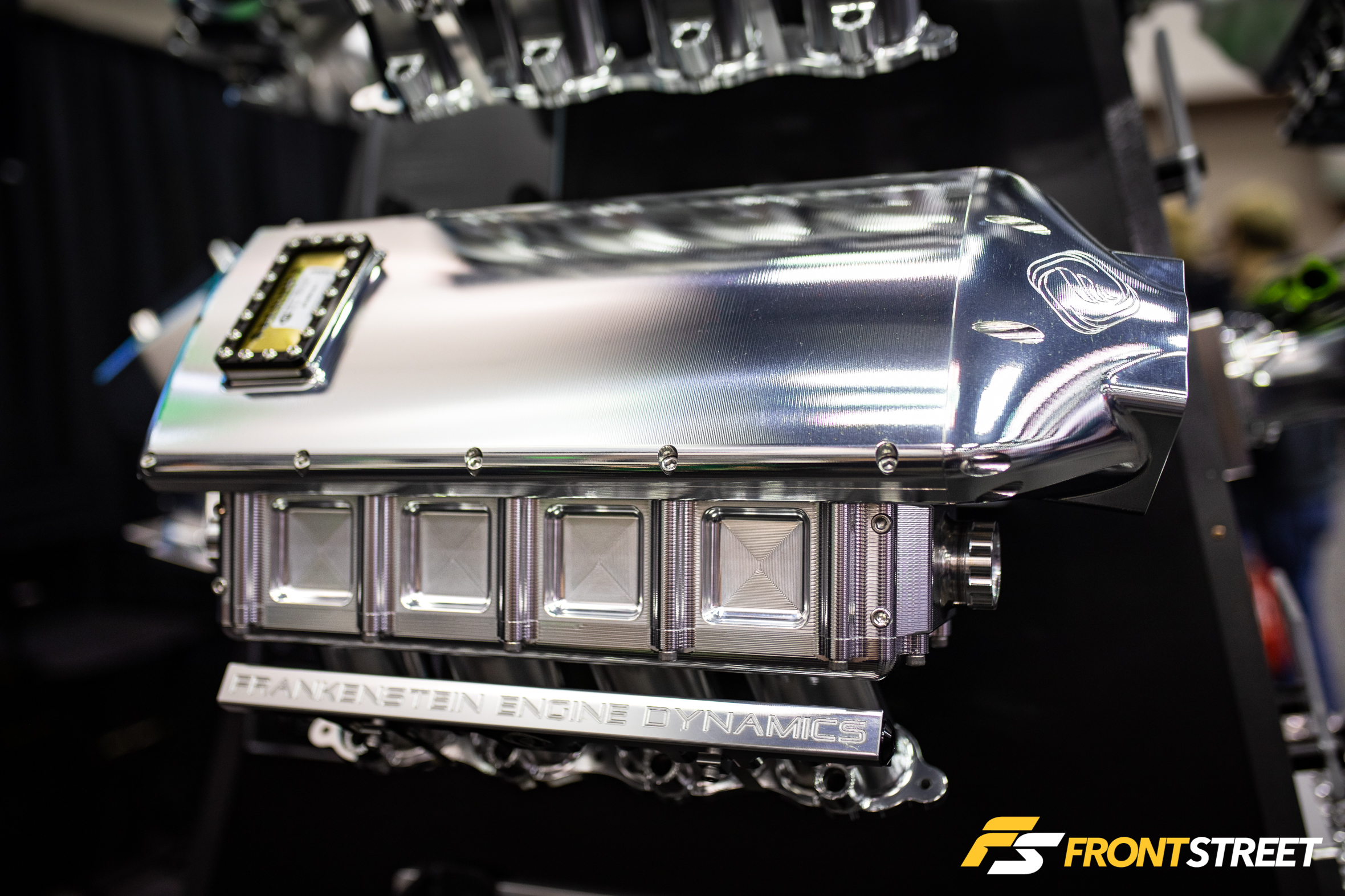
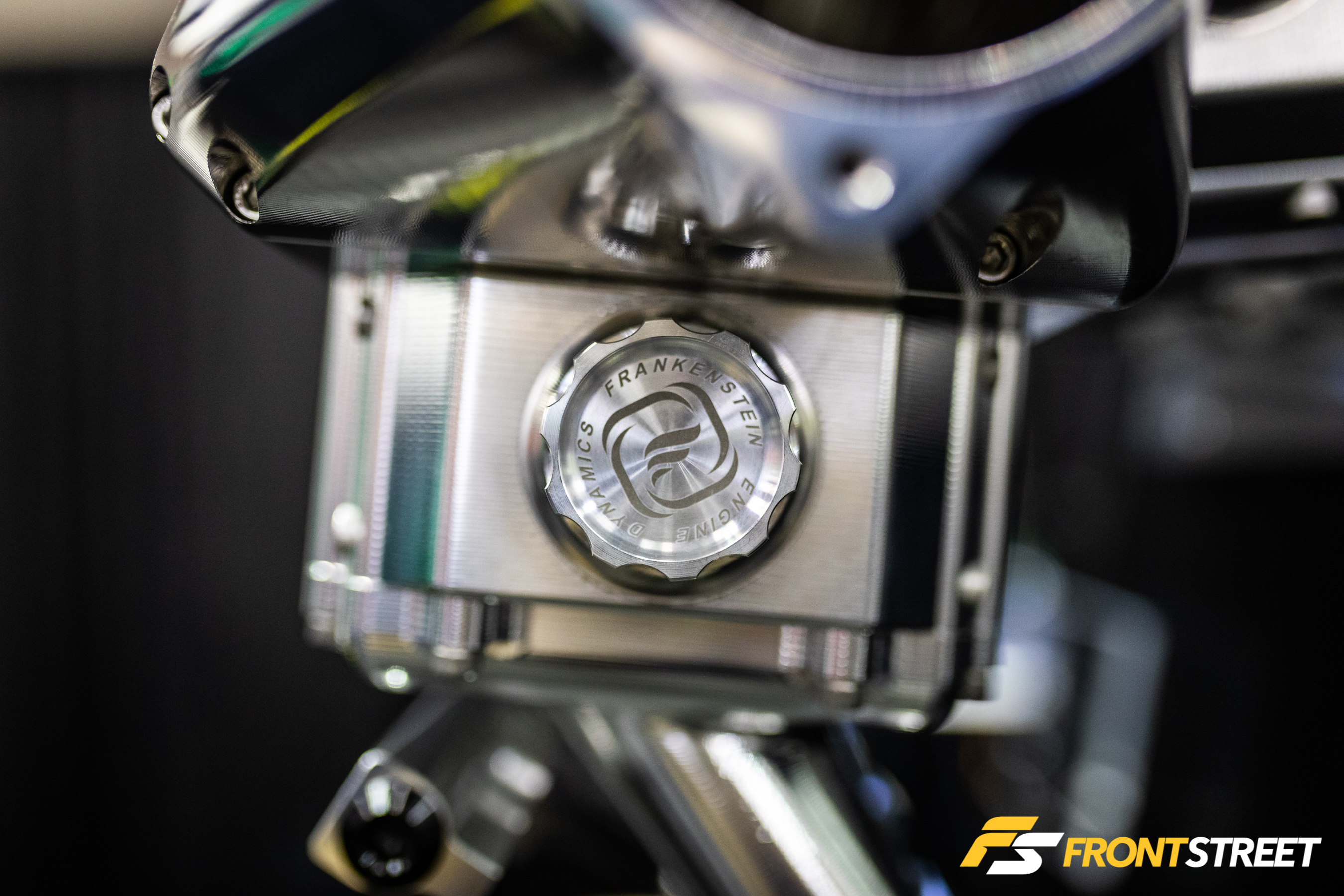
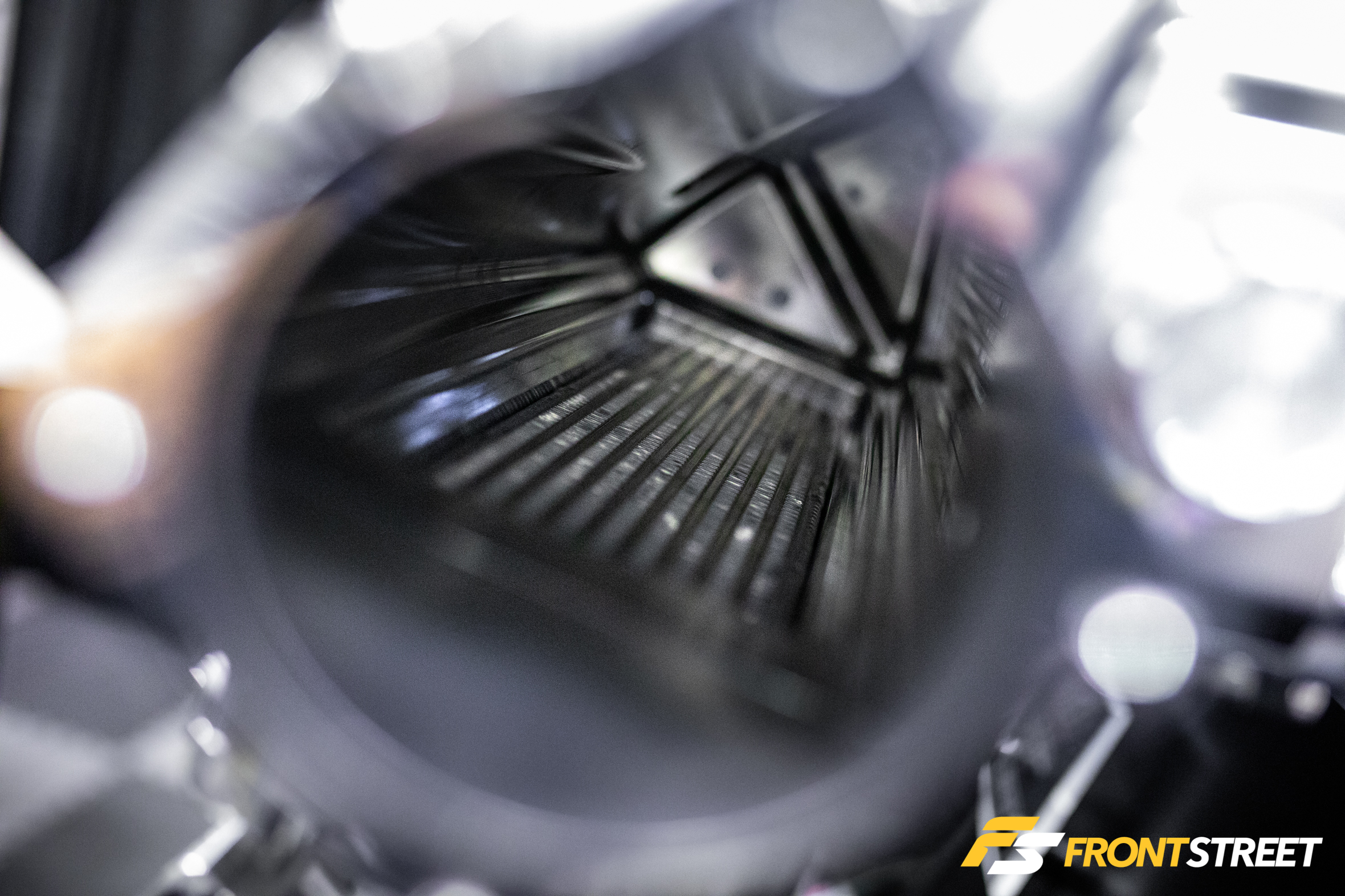
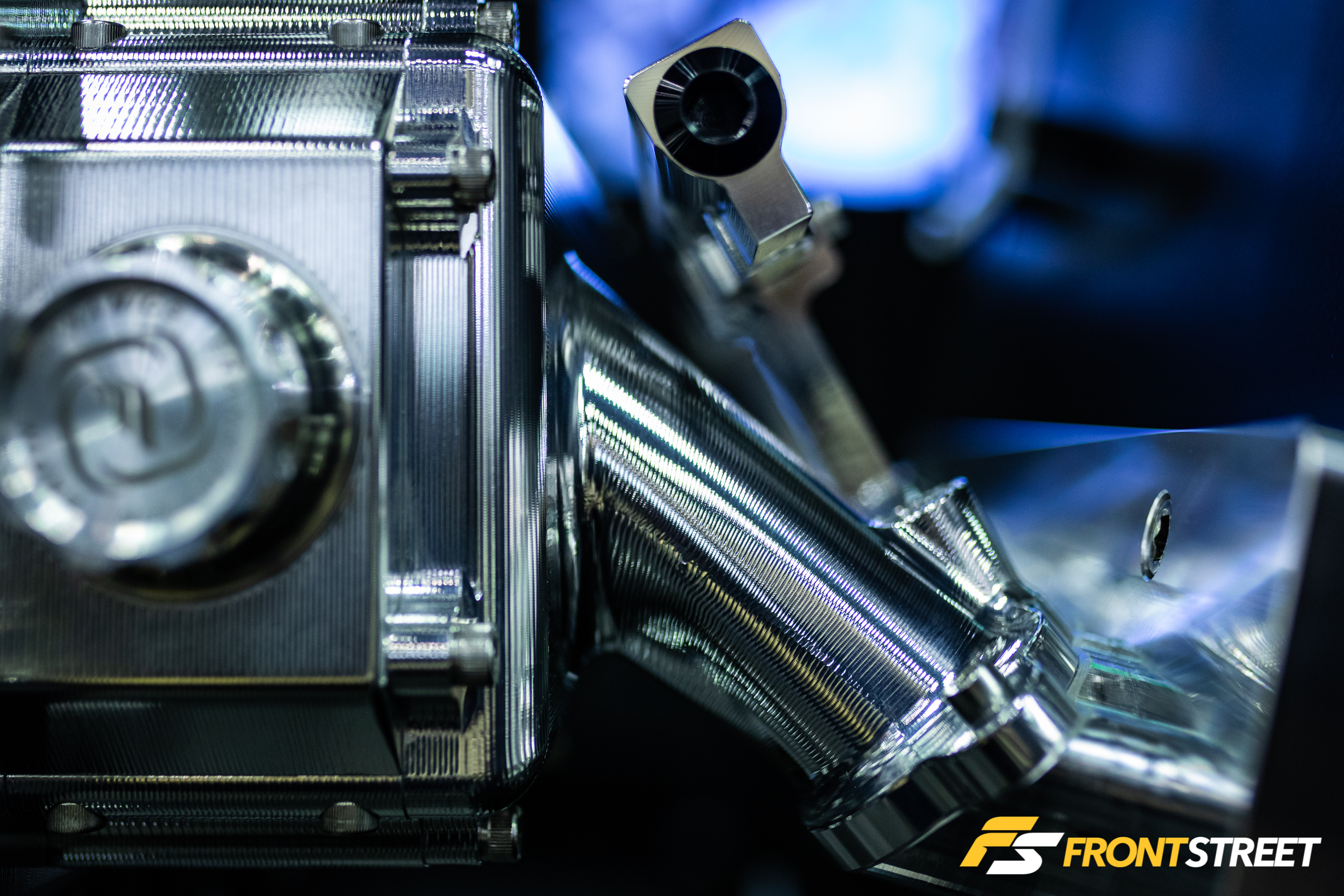
Billet goodness came in many forms this year at PRI. One of the most eye-catching items I saw was the pair of intake manifolds from Chris Frank and my friends down at Frankenstein Engine Dynamics. The company’s top-shelf Bulldog intake is for the big-boost crowd, fits all Coyote and GT350 engine platforms, and will support 2,000-plus horsepower. The dual integrated air-to-water intercoolers built right into the manifold help to simplify packaging concerns for owners of the wide 5.0-liter engine. The manifold’s construction is robust all the way around, as I’ve come to expect from Frankenstein, given the company’s offerings for other platforms. The price is—as expected—beefy as well, starting at $6,200. Hey, nobody said horsepower was cheap!
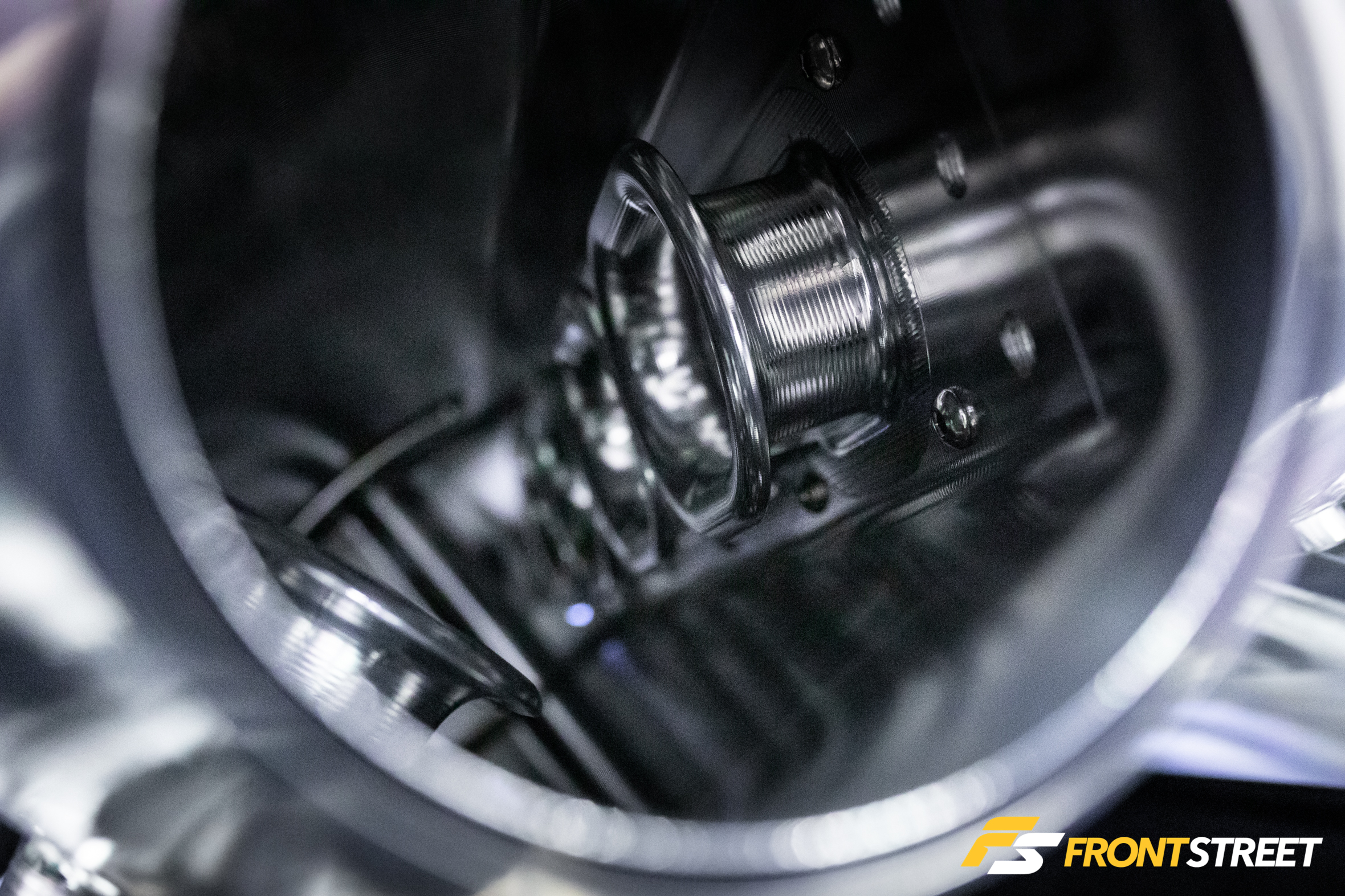
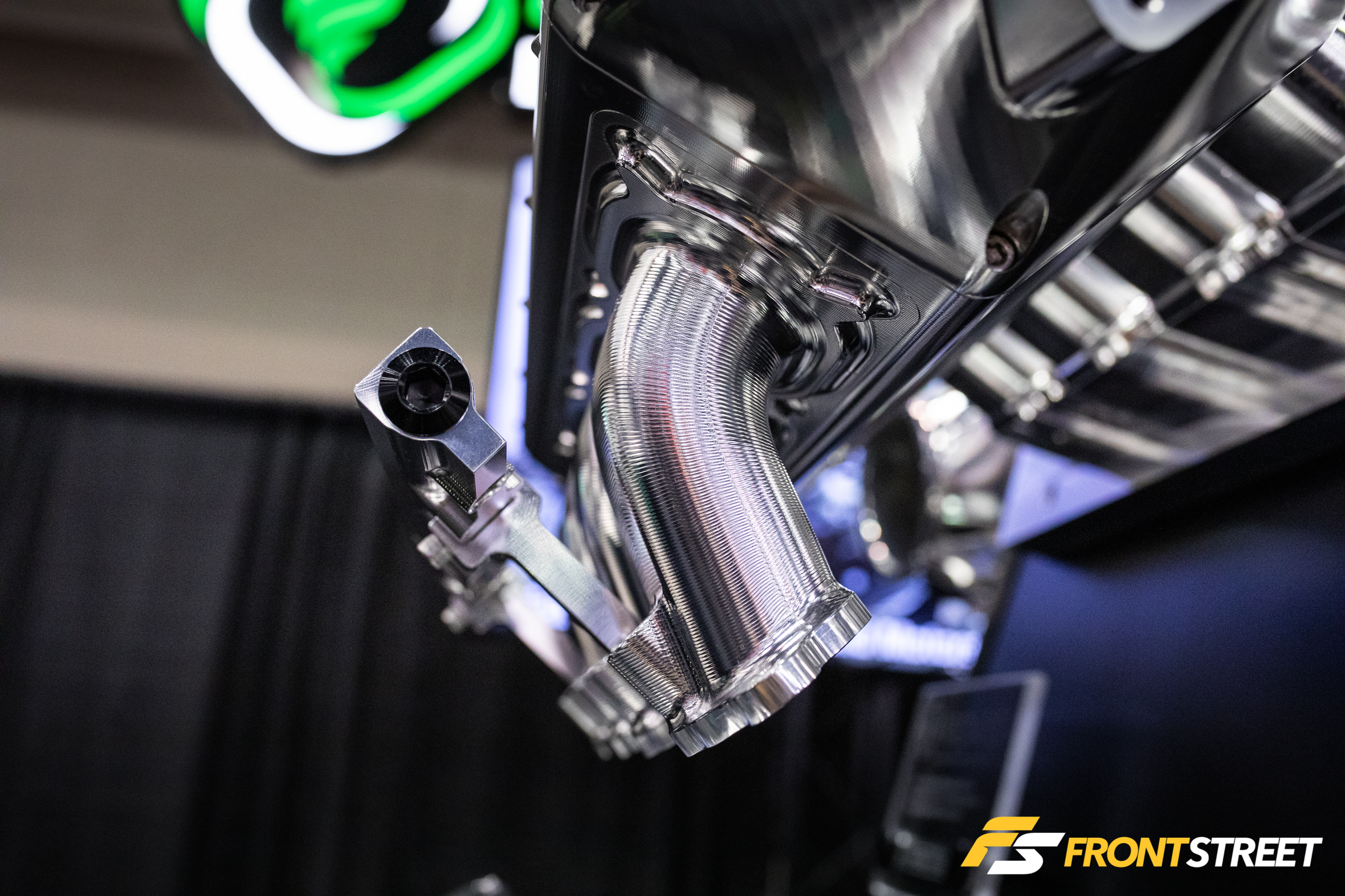
FED also showed off its Predator billet intake, which is similar to the Bulldog in terms of dimensions and construction but omits the intercooler cores. The Predator fits under the stock hood and strut brace on Coyote/GT350 applications and carries a starting price tag of $4,000.
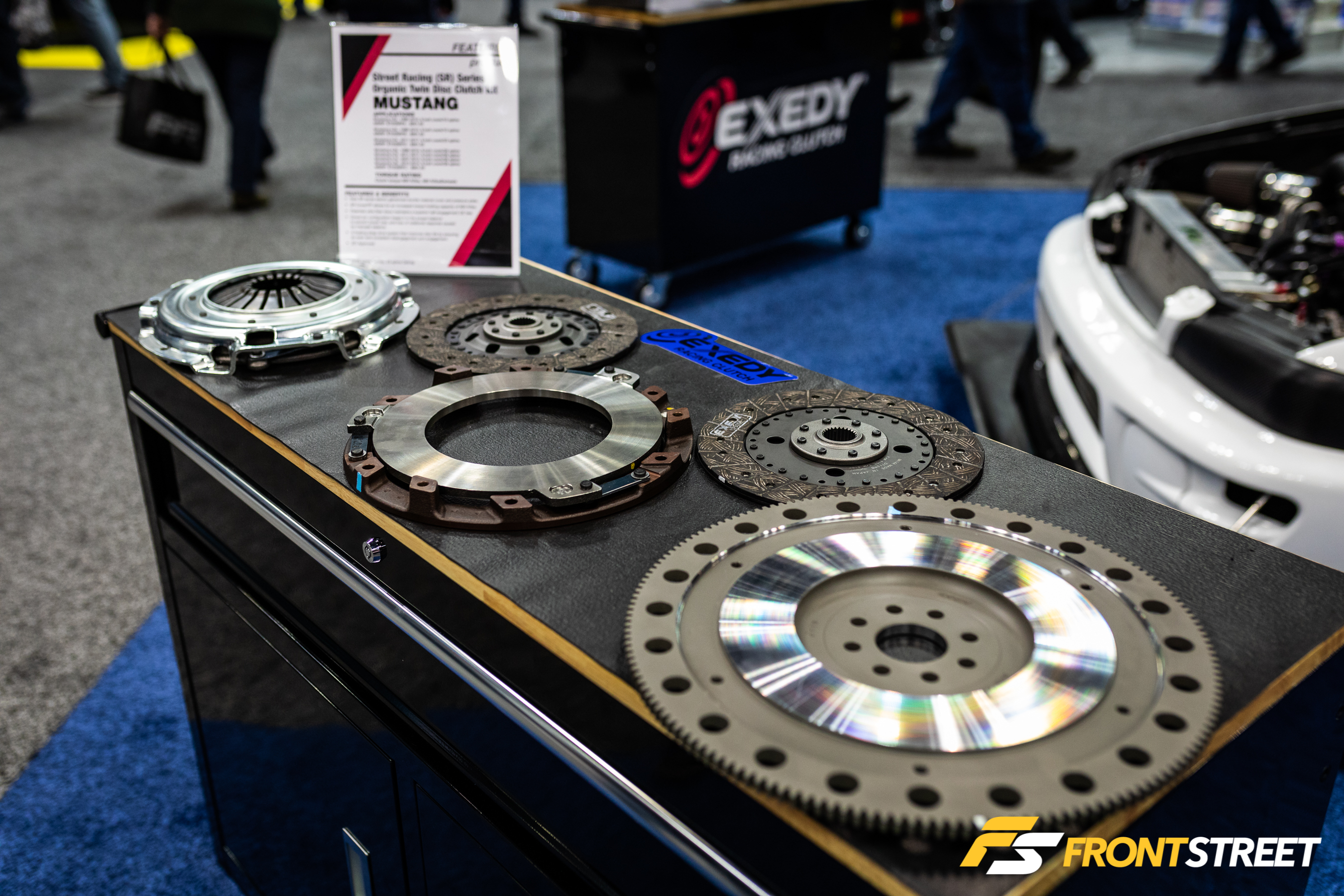
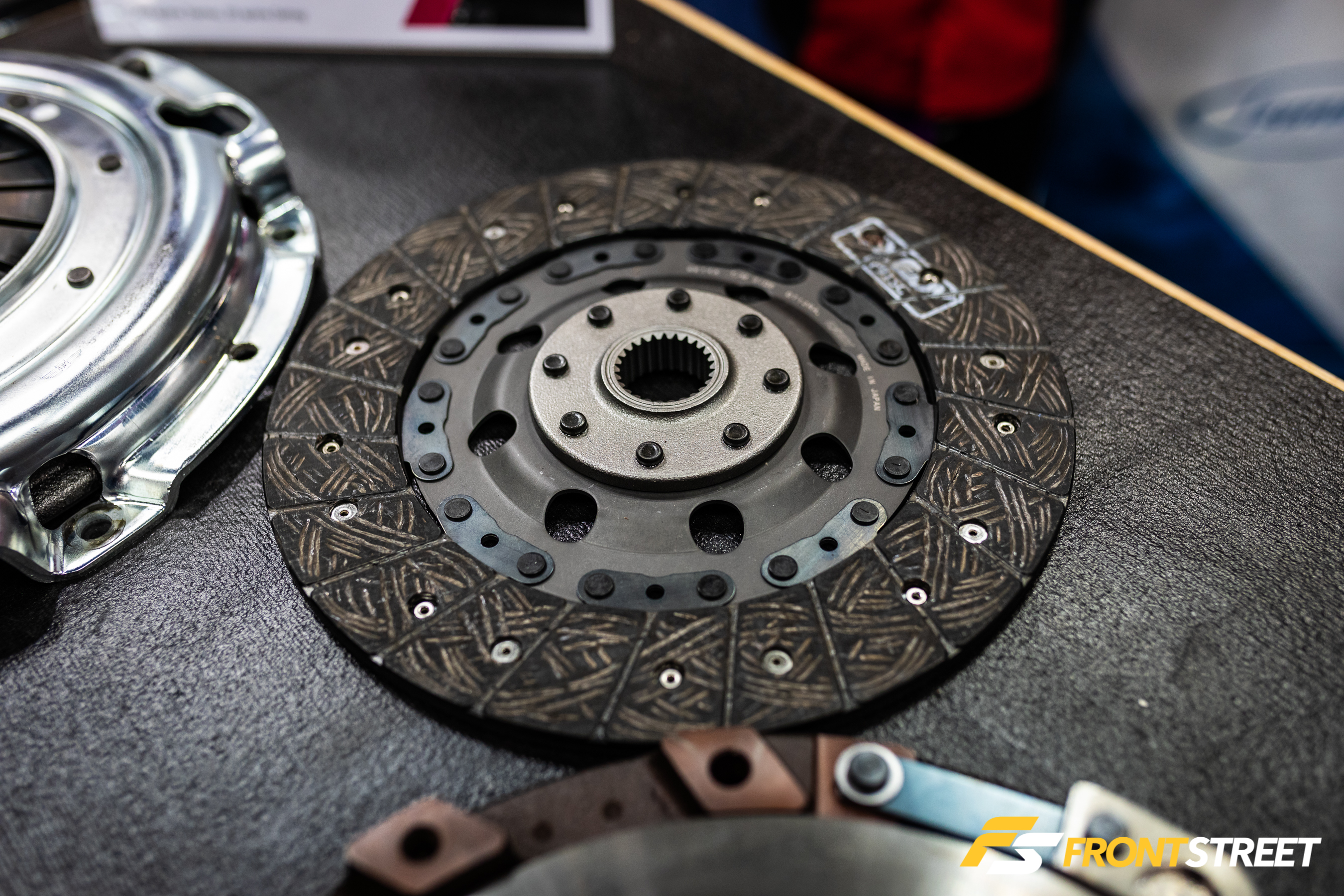
Four part numbers cover the gamut of Mustang engines from 1996-2017 (including GT500) on this new SR Series organic twin-disc clutch kit from Exedy. With torque-holding capacity of 900 lb-ft and ultra fiber discs, the aim of these kits is to retain a smooth, easy pedal feel while still capturing the horsepower of today’s big-power street cars. Remember, these discs are organic, though, so drag racing with one of these in your car may not be the best bet.
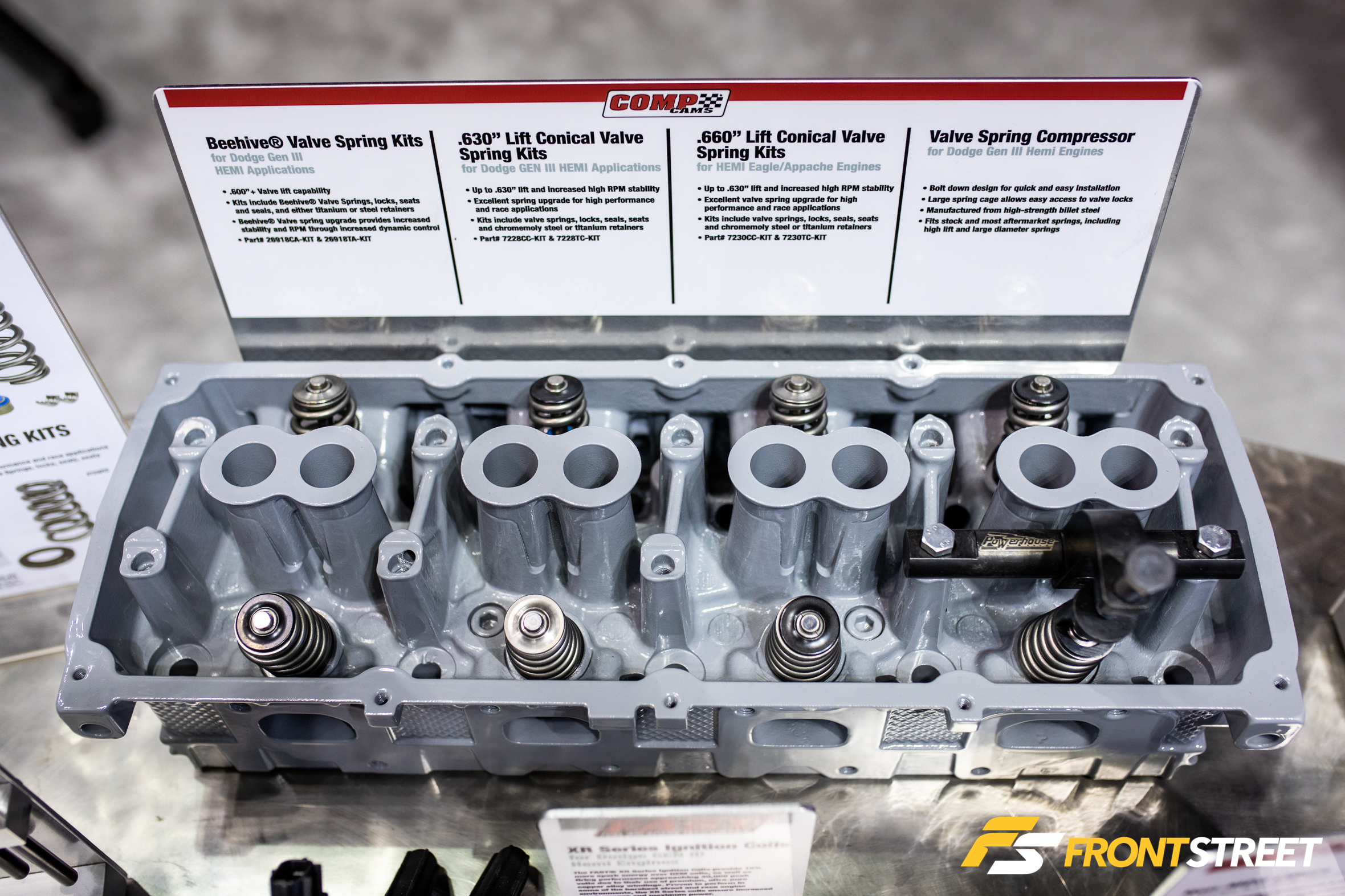
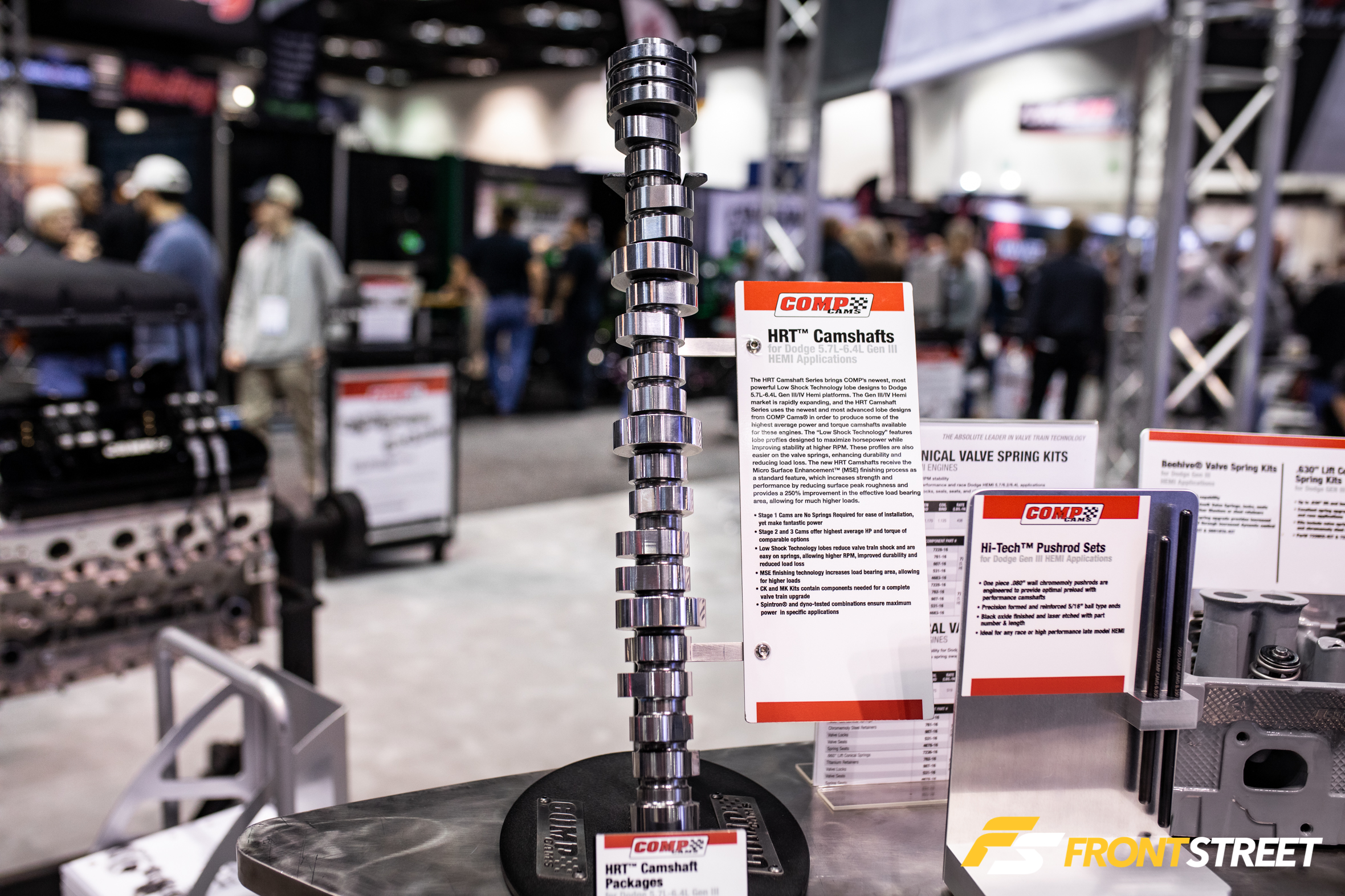
Comp Cams is all-in on the Gen III Hemi platform, with a couple of new spring kits, three stages of HRT camshafts, and even tools to change the springs with ease. According to Mark Campbell of Comp Cams, these Spintron-tested components offer massive horsepower gains with no adverse effects. They also have new hydraulic lifters and several other Hemi components for 2020.
If you’ve been to PRI, then you know why it’s one of my favorite events of the year. And if you haven’t been there, get there. You’ll see.
Check out the gallery below for more billet goodies (like Magnatron’s LS intake and head at the very bottom) along with some of the other image captures I snagged over the week.




















































